Exploitation films are a unique breed of cinema, notorious for pushing boundaries to captivate audiences.
They’re known for sensational content, often leveraging sex, violence, or other taboo topics to grab attention.
We’ll jump into the gritty world of these films, exploring why they’ve gained a cult following and how they’ve impacted mainstream cinema.
Stay with us as we uncover the allure of exploitation films and their controversial place in film history.
History Of Exploitation Films
Exploitation films have a storied past, intertwined with the fabric of cinema history.
They first rose to prominence in the early 20th century, back when the motion picture industry was in its infancy.
During this era, filmmakers recognized that certain taboo topics and sensationalized content drew crowds, Even though or perhaps because of their controversial nature.
These films evolved in the 1930s and 40s, capitalizing on subjects not typically addressed in mainstream Hollywood.
Outfits like Roadshow pictures would tour with their movies, often exploiting the lack of strict censorship that existed before the Production Code was firmly enforced.
Films such as Reefer Madness played up controversial subjects under the guise of educating the public.
Post-World War II saw a surge in exploitation films as independent producers and directors sought to fill the void left by the Hollywood studio system’s stronghold on theatrical releases.
This period ushered in the age of the B-movie, with films that exploited emerging subgenres –
- horror,
- science fiction,
- juvenile delinquent dramas.
In the 1960s and 70s, exploitation films became synonymous with grindhouse cinema – a term denoting theaters that primarily showed low-budget horror, splatter, and sexploitation films.
This era birthed now-iconic subgenres, taking advantage of the relaxation in censorship laws to push boundaries further.
Films from this period include Night of the Living Dead and Pink Flamingos, each exploiting different aspects of viewer fascination and cultural taboos.
The 1980s and beyond saw exploitation films influence mainstream cinema and morph into new sub-sections.
These included the slasher films of the ’80s and the arrival of “torture porn” in the early 2000s.
Directors like Quentin Tarantino and Robert Rodriguez, inspired by the exploitation era, have created modern homages in films such as Kill Bill and Machete, showcasing the enduring legacy of exploitation films within the broader cinematic landscape.
Best Exploitation Films
Let’s jump into our list of the best exploitation movies.
The Texas Chain Saw Massacre (1974)
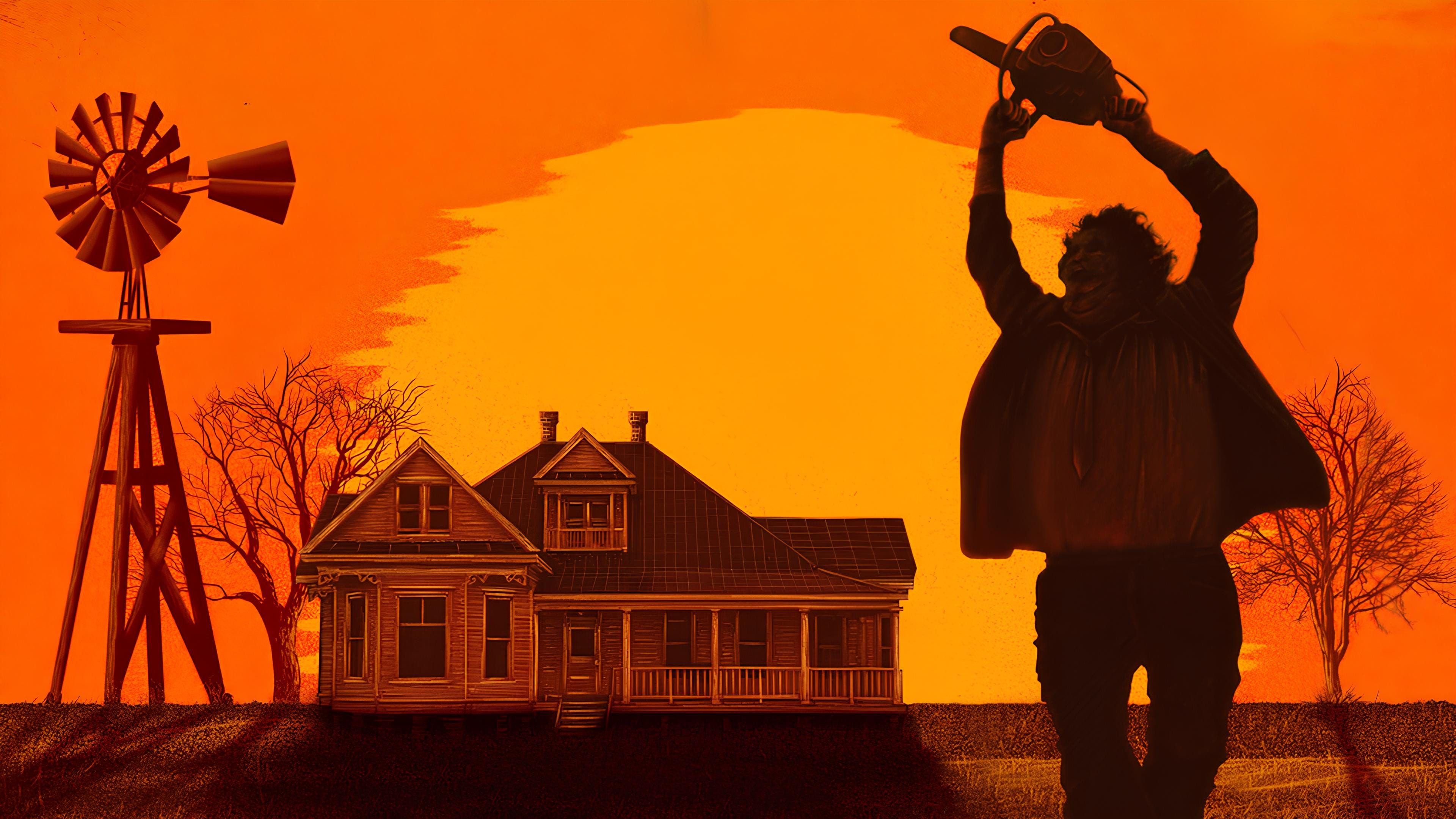
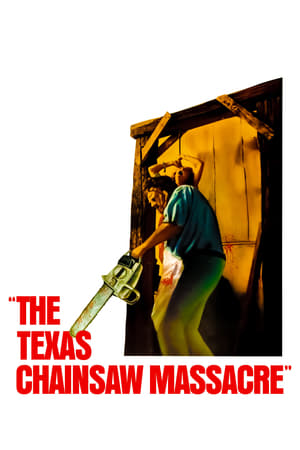
The Texas Chain Saw Massacre
Who will survive and what will be left of them?
1974 • 1h 23min • ★ 7.279/10 • United States of America
Directed by: Tobe Hooper
Cast: Marilyn Burns, Allen Danziger, Paul A. Partain, William Vail, Teri McMinn
Five friends head out to rural Texas to visit the grave of a grandfather. On the way they stumble across what appears to be a deserted house, only to discover something sinister within. Something armed with a chainsaw.
“The Texas Chain Saw Massacre” is a horror film released in 1974, directed by Tobe Hooper. The film follows a group of young friends who are traveling through rural Texas and become the targets of a family of cannibals.
The film is known for its intense and graphic depictions of violence, as well as its gritty and realistic aesthetic. Despite its controversial subject matter, the film has become a cult classic and is widely regarded as one of the most influential horror movies of all time.
Some of the key features of “The Texas Chain Saw Massacre” include its use of handheld cameras and natural lighting to create a sense of realism and immediacy, as well as its focus on extreme violence and gore.
The film also features a memorable and iconic villain in the form of Leatherface, a chainsaw-wielding maniac who wears a mask made of human skin.
Overall, “The Texas Chain Saw Massacre” is a landmark horror film that continues to influence and inspire filmmakers today, both in terms of its content and its innovative visual and storytelling techniques.
- Marilyn Burns, Paul A. Partain, Gunnar Hansen (Actors)
- Tobe Hooper (Director)
- Audience Rating: NR (Not Rated)
Cannibal Holocaust (1980)
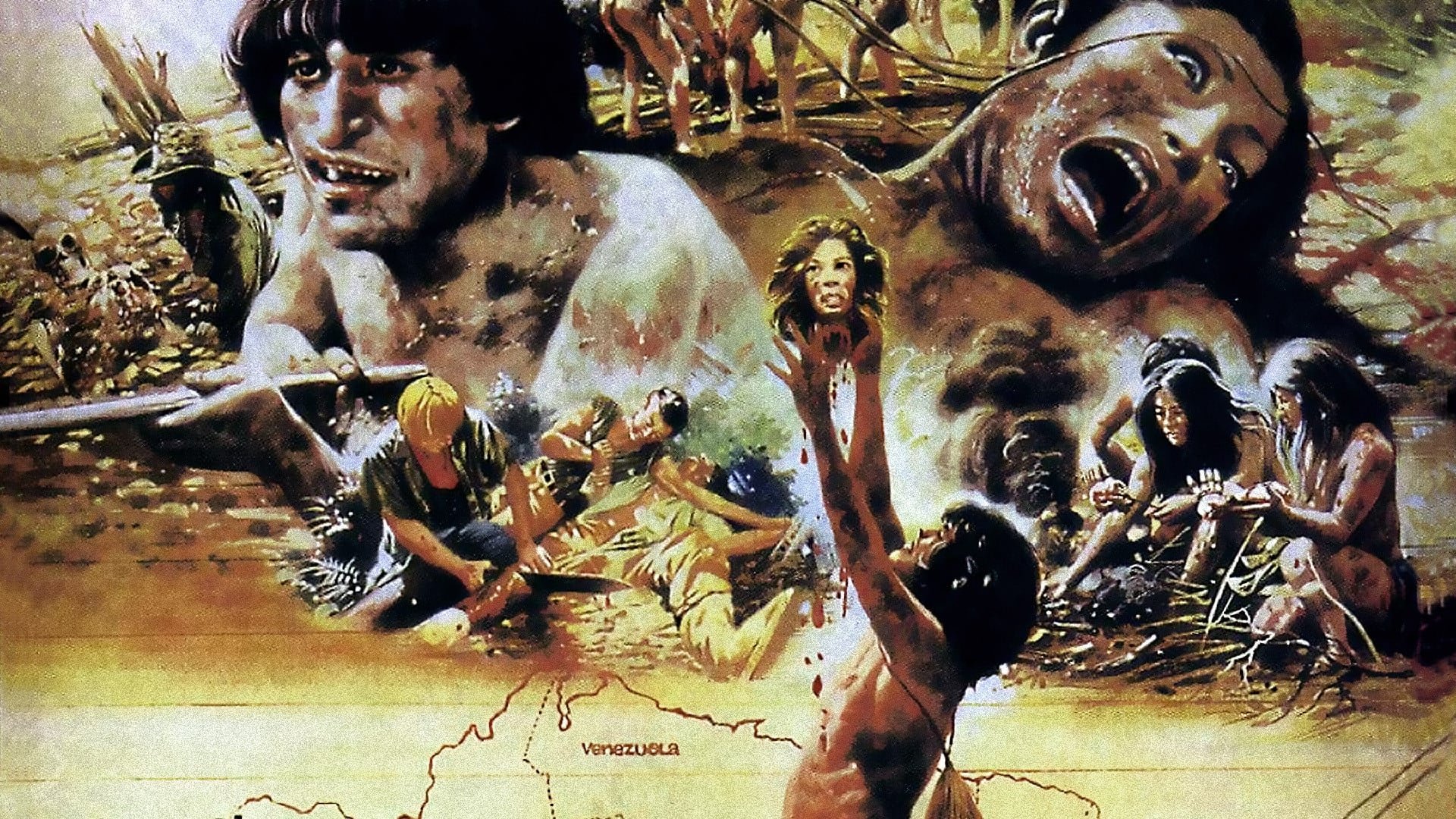
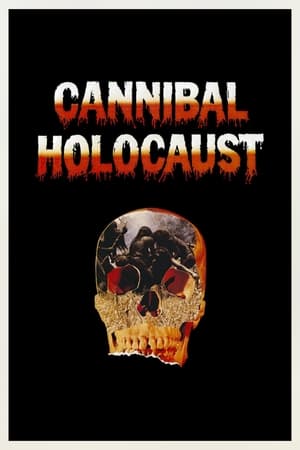
Cannibal Holocaust
They eat and they are eaten!
1980 • 1h 36min • ★ 6.3/10 • Colombia
Directed by: Ruggero Deodato
Cast: Robert Kerman, Francesca Ciardi, Perry Pirkanen, Luca Barbareschi, Salvatore Basile
A New York University professor returns from a rescue mission to the Amazon rainforest with the footage shot by a lost team of documentarians who were making a film about the area's local cannibal tribes.
“Cannibal Holocaust” is a controversial Italian horror film directed by Ruggero Deodato and released in 1980.
The film tells the story of a group of American filmmakers who travel to the Amazon rainforest to make a documentary about indigenous tribes, but become victims of the violence and savagery of the local cannibal tribes.
The film gained notoriety for its graphic violence, sexual assault, and animal cruelty, which led to its ban in several countries and legal action against the filmmakers.
However, “Cannibal Holocaust” is also considered by some to be a landmark in the horror genre, due to its influence on found footage films, as well as its commentary on the ethics of documentary filmmaking.
The film’s graphic content includes scenes of real animal slaughter, simulated human dismemberment and other violent acts.
This has led to criticism of the film as exploitative and gratuitous, and it has been the subject of numerous debates about the ethics of depicting violence and cruelty on screen.
While “Cannibal Holocaust” remains a controversial film, it has also gained a cult following and has been credited with influencing other horror films and the found footage genre.
Its impact on the horror film industry continues to be felt, despite the ongoing debate over its content and ethical implications.
- Cannibal Holocaust (1980)
- Cannibal Holocaust (1980)
- Robert Kerman, Francesca Ciardi, Perry Pirkanen (Actors)
- Ruggero Deodato (Director) - Cannibal Holocaust (1980) (Producer)
- French (Subtitle)
I Spit on Your Grave (1978)


Day of the Woman
After it was all over... she waited... then she struck back in a way only a WOMAN can!
1978 • 1h 41min • ★ 6.015/10 • United States of America
Directed by: Meir Zarchi
Cast: Camille Keaton, Eron Tabor, Richard Pace, Anthony Nichols, Gunter Kleemann
A young, beautiful career woman rents a backwoods cabin to write her first novel. Attacked by a group of local lowlifes and left for dead, she devises a horrific plan to inflict revenge.
“I Spit on Your Grave” is a controversial 1978 American exploitation film directed by Meir Zarchi. The film tells the story of a young woman named Jennifer Hills, who rents a cabin in the countryside in order to write her first novel.
However, she is brutally assaulted by a group of local men, and left for dead. She survives the attack and seeks revenge on her attackers in a gruesome and violent way.
The film is known for its graphic depictions of sexual violence and revenge, and has been widely criticized for its portrayal of women and its depiction of sexual violence. The film has also been praised by some as a feminist revenge fantasy that empowers women to take control of their own lives and seek justice for themselves.
Despite its controversial subject matter, “I Spit on Your Grave” has become a cult classic and has spawned several sequels and remakes.
The film’s legacy has been the subject of ongoing debate, with some arguing that it perpetuates harmful stereotypes and glorifies violence, while others argue that it provides a powerful critique of sexual violence and a call to action for women to stand up against their attackers.
Pink Flamingos (1972)
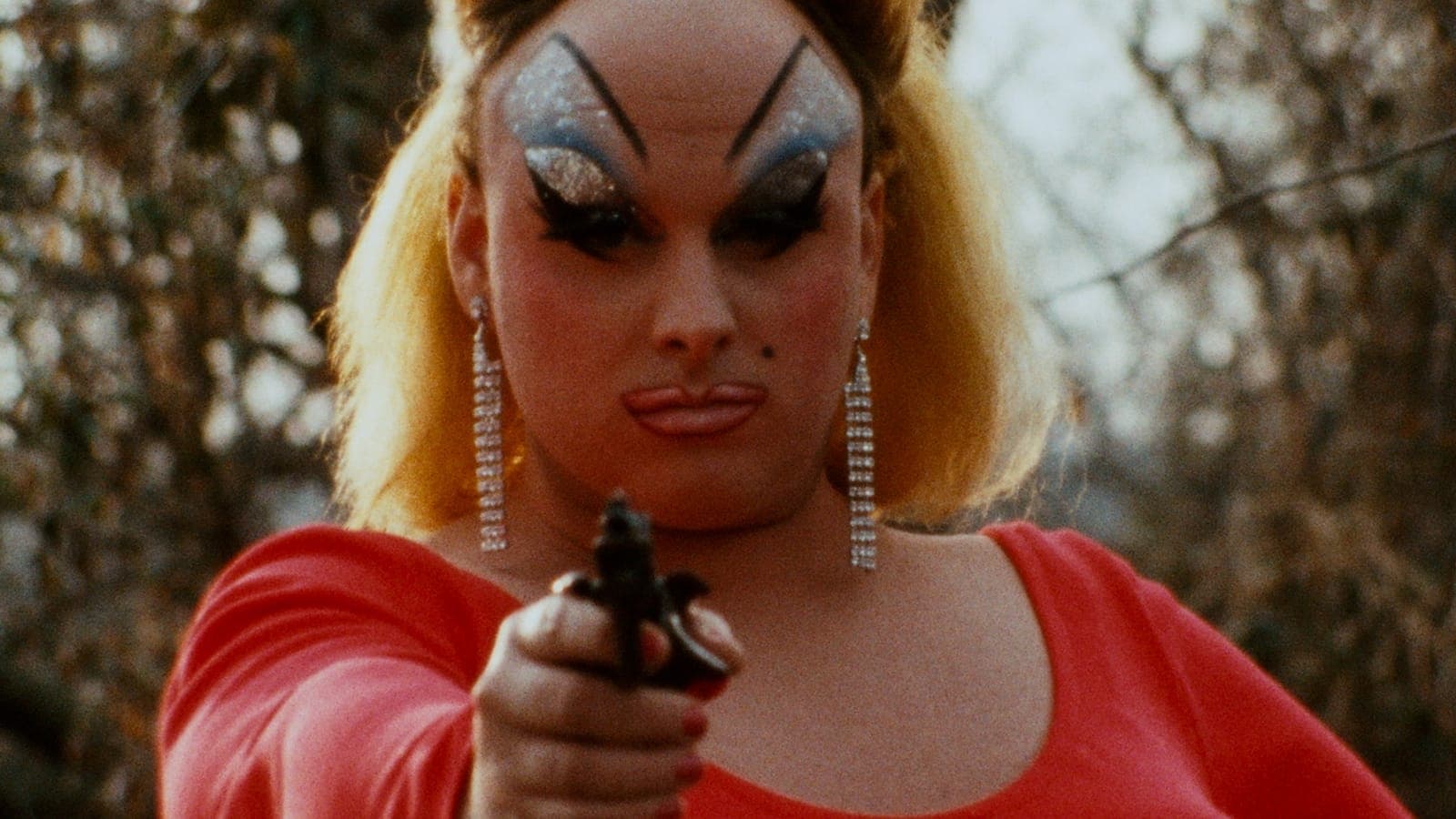
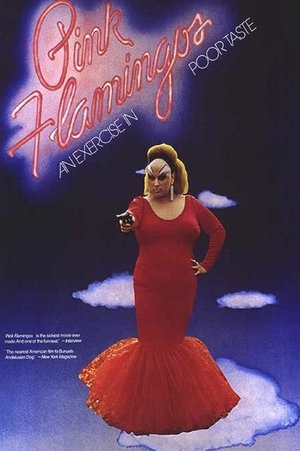
Pink Flamingos
An exercise in poor taste
1972 • 1h 33min • ★ 6.168/10 • United States of America
Directed by: John Waters
Cast: Divine, David Lochary, Mary Vivian Pearce, Mink Stole, Danny Mills
Notorious Baltimore criminal and underground figure Divine goes up against Connie & Raymond Marble, a sleazy married couple who make a passionate attempt to humiliate her and seize her tabloid-given title as "The Filthiest Person Alive".
“Pink Flamingos” is a cult classic exploitation film from 1972, directed by John Waters. The film tells the story of the “Filthiest Person Alive,” Divine, and her battle against a rival family for the title of filthiest.
The film is notorious for its graphic and transgressive content, including scenes of violence, sex, drug use, and even bestiality.
It is also known for its intentionally low production values and deliberately shocking performances, including Divine’s infamous final act.
Some of the key features of “Pink Flamingos” include its use of humor and satire to critique social norms and expectations, as well as its focus on characters who live outside of mainstream society.
The film is also notable for its use of non-professional actors and its DIY approach to filmmaking, which has influenced a generation of underground filmmakers and artists.
Despite its controversial subject matter, “Pink Flamingos” has become a cult classic and is widely regarded as a landmark in the history of independent cinema. It continues to be celebrated for its subversive spirit and its willingness to push the boundaries of what is considered acceptable in art and culture.
- Divine, David Lochary, Mary Vivian Pearce (Actors)
- John Waters (Director)
- English (Publication Language)
- Audience Rating: NC-17 (Adults Only)
The Last House on the Left (1972)
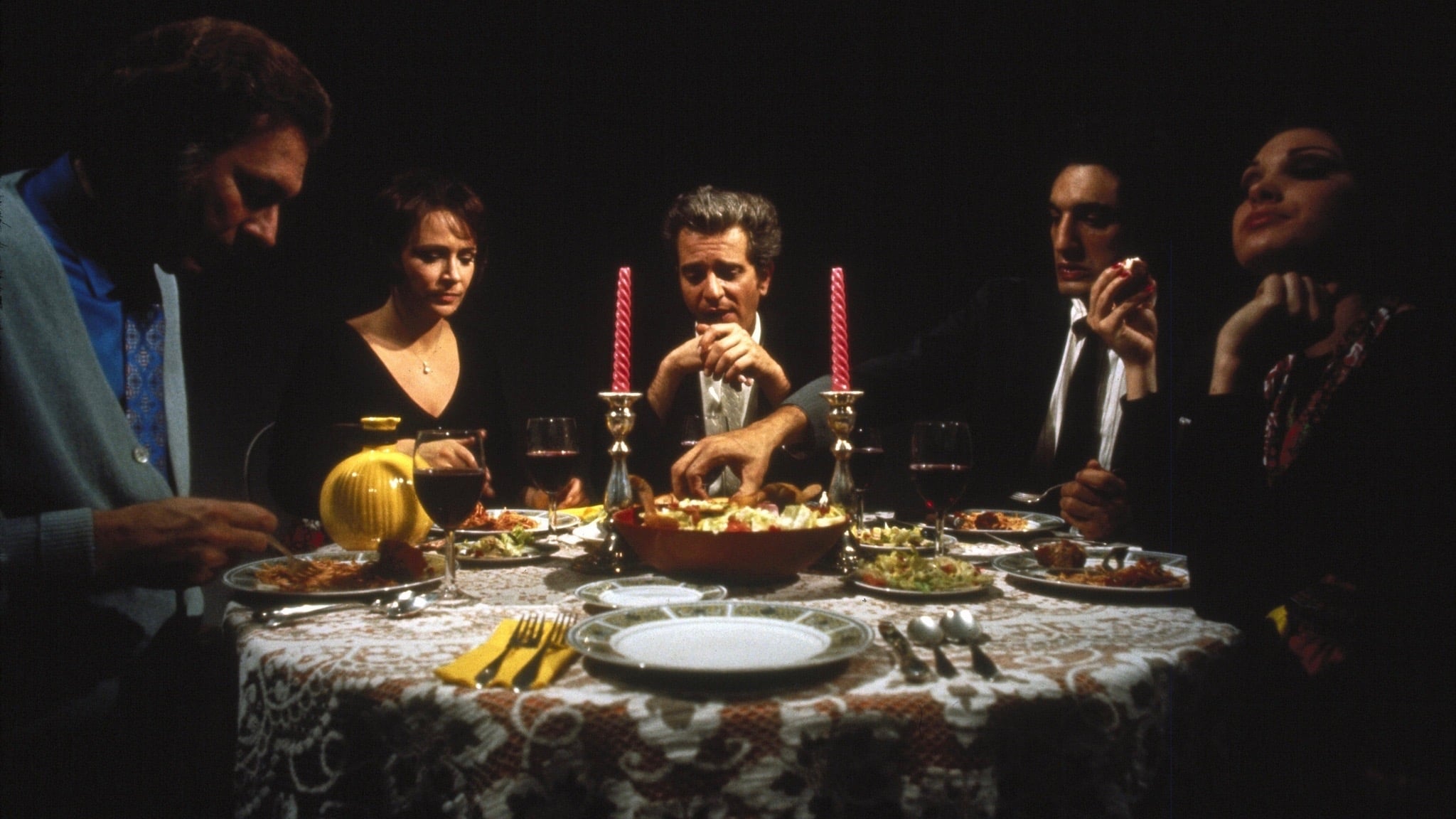
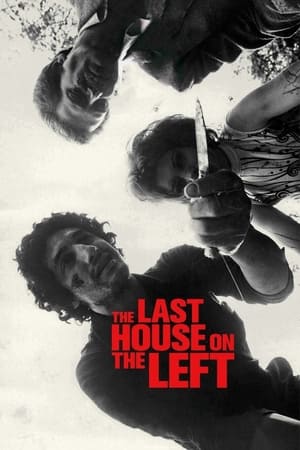
The Last House on the Left
To avoid fainting keep repeating, it's only a movie... Only a movie... Only a movie...
1972 • 1h 24min • ★ 6.012/10 • United States of America
Directed by: Wes Craven
Cast: Sandra Peabody, Lucy Grantham, David Hess, Fred J. Lincoln, Jeramie Rain
On the eve of her 17th birthday, Mari and friend Phyllis set off from her family home to attend a rock concert in the city. Attempting to score some drugs on the way, the pair run afoul of a group of vicious crooks, headed up by the sadistic Krug.
“The Last House on the Left” is a 1972 horror film directed by Wes Craven. The film tells the story of a group of teenage girls who are kidnapped, tortured, and murdered by a gang of sadistic criminals, and the revenge that is exacted on the gang by the parents of one of the victims.
The film is known for its brutal violence and disturbing imagery, which was controversial at the time of its release and remains so today.
The film’s graphic content includes torture and murder, and has led to criticism of the film as exploitative and gratuitous.
Despite its controversial content, “The Last House on the Left” has been credited with influencing the horror genre and the portrayal of violence in film. The film has been remade twice, in 2009 and 2021, and has been the subject of numerous discussions and debates about the depiction of violence in media.
While “The Last House on the Left” remains a controversial film, it has also been praised for its exploration of the themes of revenge, justice, and morality. The film has been analyzed for its commentary on the violent impulses of human nature and the consequences of taking justice into one’s own hands.
- Amazon Prime Video (Video on Demand)
- Marc Sheffler, David Hess (Actors)
- Wes Craven (Director) - Katherine D'Amato (Producer)
- English (Playback Language)
- English (Subtitle)
Bloodsucking Freaks (1976)

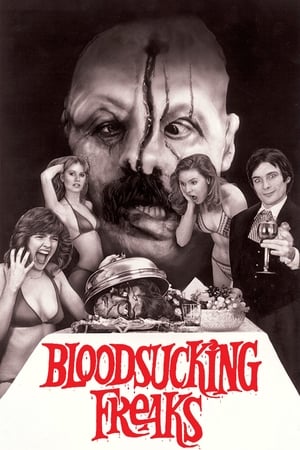
Bloodsucking Freaks
Join The Fun! Human Dart Boards! "Home Style Brain Surgery" Dental Hijinks!
1976 • 1h 25min • ★ 4.905/10 • United States of America
Directed by: Joel M. Reed
Cast: Seamus O'Brien, Viju Krem, Niles McMaster, Dan Fauci, Alan Dellay
Sardu, master of the Theatre of the Macabre, and his assistant Ralphus run a show in which, under the guise of 'magic', they torture and murder people in front of their audience. But what the punters see as a trick is actually real.
“Bloodsucking Freaks” is a controversial horror-comedy film released in 1976, directed by Joel M. Reed. The film is known for its graphic and extreme depictions of violence, torture, and sexual exploitation, and has been widely criticized for its misogynistic and exploitative content.
The film tells the story of Sardu, a sadistic and deranged showman who runs a theater of the macabre. Sardu and his assistant, Ralphus, kidnap young women and subject them to horrific acts of torture and violence for the entertainment of their audience.
As the story unfolds, a young journalist named Natasha investigates the disappearances and seeks to put an end to Sardu’s reign of terror.
“Bloodsucking Freaks” has been the subject of controversy and censorship due to its explicit and graphic content, particularly its depictions of violence against women. The film has been widely criticized for its exploitative and misogynistic themes, which some argue serve to perpetuate harmful attitudes towards women.
Despite its controversial content, “Bloodsucking Freaks” has achieved cult status and has been embraced by some horror fans for its campy and over-the-top style. However, it remains a highly divisive and controversial film, and its legacy has been the subject of ongoing debate.
- Amazon Prime Video (Video on Demand)
- Seamus O'Brien, Viju Krem, Niles McMaster (Actors)
- Joel M. Reed (Director) - Joel M. Reed (Writer) - Troma (Producer)
- English (Playback Language)
- English (Subtitle)
Ilsa: She Wolf of the S.S. (1974)
No poster available
“Ilsa: She Wolf of the S.S.” is an exploitation film released in 1974, directed by Don Edmonds. The film is set in a Nazi concentration camp during World War II and follows the sadistic exploits of Ilsa, a cruel and sexually depraved commandant who experiments on prisoners in her quest to create the perfect Aryan race.
The film is known for its graphic and controversial subject matter, which includes depictions of extreme violence, torture, and sexual assault.
It is also notable for its intentional use of Nazi imagery and symbolism, which has led to accusations of exploitation and insensitivity.
Despite its controversial subject matter, “Ilsa: She Wolf of the S.S.” has become a cult classic and is considered a landmark in the history of exploitation cinema. It is often cited as an example of the genre’s willingness to push the boundaries of good taste and its focus on taboo and controversial subject matter.
Overall, “Ilsa: She Wolf of the S.S.” is a challenging and provocative film that continues to inspire debate and controversy among audiences and critics alike.
While its content is undeniably difficult and disturbing, it remains an important part of the history of exploitation cinema and an example of the power of film to shock and challenge its viewers.
- Dyanne Thorne, Gregory Knoph, Tony Mumolo (Actors)
- Don Edmonds (Director) - John C.W. Saxton (Writer)
- Audience Rating: X (Mature Audiences Only)
Caligula (1979)

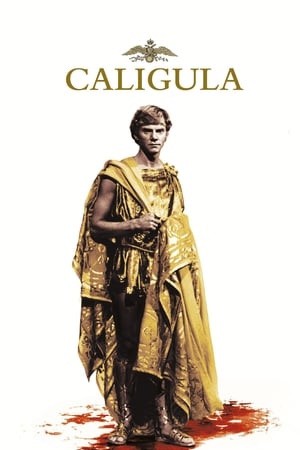
Caligula
Absolute power corrupts
1979 • 2h 36min • ★ 6/10 • Italy
Directed by: Tinto Brass
Cast: Malcolm McDowell, Teresa Ann Savoy, Helen Mirren, Peter O'Toole, John Steiner
After the death of the paranoid emperor Tiberius, Caligula, his heir, seizes power and plunges the empire into a bloody spiral of madness and depravity.
“Caligula” is a controversial historical drama film released in 1979, directed by Tinto Brass and produced by Bob Guccione. The film depicts the life of the Roman emperor Caligula, who was known for his decadence, cruelty, and debauchery.
The film is infamous for its explicit sexual content, graphic violence, and scenes of cruelty, which led to its being banned in several countries and criticized for its gratuitous depiction of sex and violence. The film also features a high-profile cast, including Malcolm McDowell, Helen Mirren, and Peter O’Toole.
“Caligula” was initially conceived as a mainstream historical drama, but the director and producers ended up including graphic sexual content and violence that went beyond what was acceptable at the time.
The film was met with negative reviews upon its release and has been widely regarded as a commercial failure. However, it has gained a cult following and is now considered by some to be a significant film in the exploitation genre.
Despite its controversial content and poor critical reception, “Caligula” has had a lasting impact on the film industry, inspiring other filmmakers to push the boundaries of explicit content in their work.
The film also continues to be the subject of debate and analysis for its depictions of violence, sex, and power, and its place in the history of exploitation films.
- Amazon Prime Video (Video on Demand)
- Mary Beard (Actor)
- Hugo MacGregor (Director) - Mary Beard (Writer) - Caterina Turroni (Producer)
- English (Playback Language)
- English (Subtitle)
Salo, or the 120 Days of Sodom (1975)
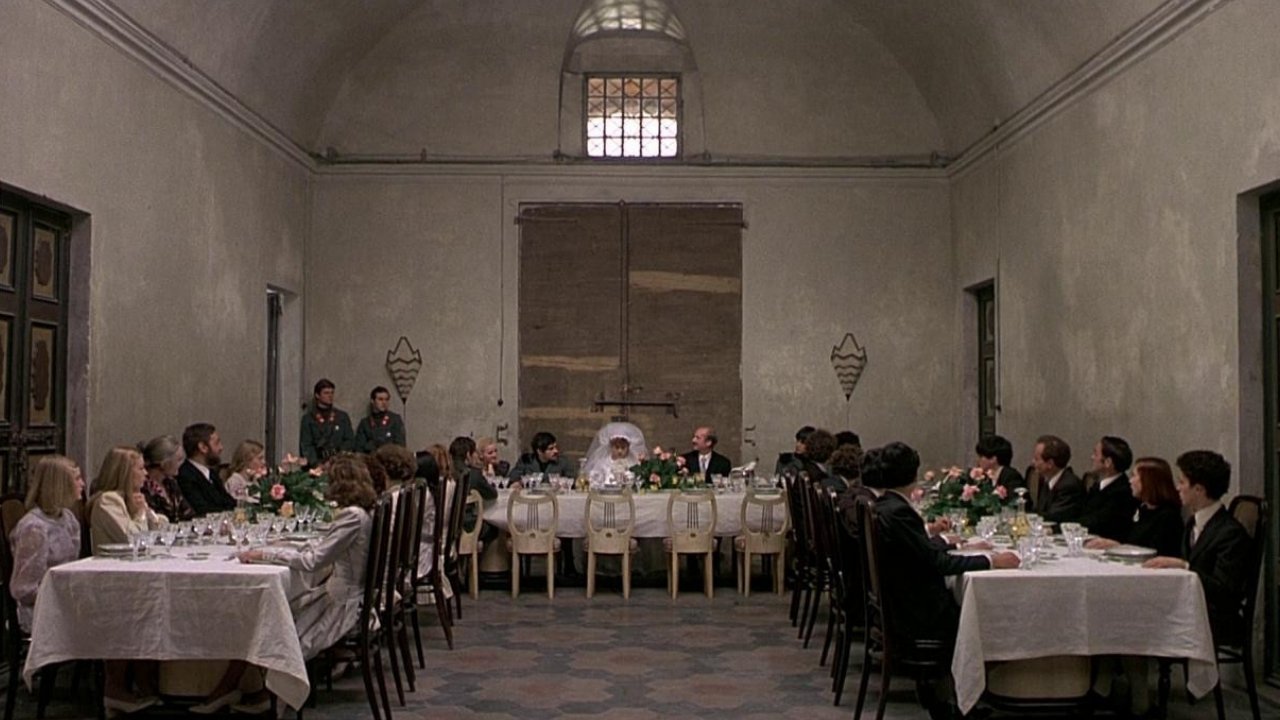
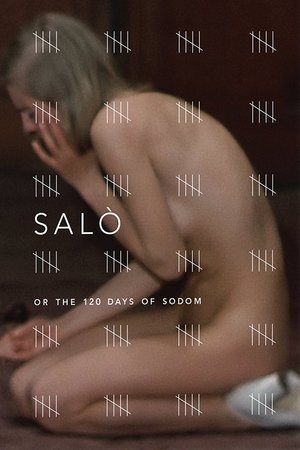
Salò, or the 120 Days of Sodom
The final vision of a controversial filmmaker.
1976 • 1h 56min • ★ 6.4/10 • Italy
Directed by: Pier Paolo Pasolini
Cast: Paolo Bonacelli, Giorgio Cataldi, Uberto Paolo Quintavalle, Aldo Valletti, Caterina Boratto
Four corrupted fascist libertines round up 9 teenage boys and girls and subject them to 120 days of sadistic physical, mental and sexual torture.
“Salo, or the 120 Days of Sodom” is a highly controversial Italian film directed by Pier Paolo Pasolini and released in 1975.
The film is an adaptation of the book “The 120 Days of Sodom” by the Marquis de Sade, and tells the story of a group of fascist leaders who kidnap a group of young men and women and subject them to extreme acts of torture and sexual abuse.
The film is notorious for its graphic and disturbing depictions of violence, sexual abuse, and humiliation, and has been widely criticized for its content.
The film was banned in several countries and has been the subject of ongoing debate regarding its artistic merit and social impact.
Despite its controversial subject matter, “Salo” has been acclaimed by some as a powerful critique of fascism and a condemnation of violence and abuse of power. The film’s explicit and provocative content has been interpreted as a deliberate challenge to mainstream morality and a call to action for social change.
Overall, “Salo, or the 120 Days of Sodom” is a highly divisive and controversial film that has had a significant impact on the world of cinema and continues to provoke strong reactions and debates.
- Paolo Bonacelli, Giorgio Cataldi, Umberto Paolo Quintavalle (Actors)
- Pier Paolo Pasolini (Director) - Alberto Grimaldi (Producer)
- English (Subtitle)
- English (Publication Language)
- Audience Rating: NR (Not Rated)
The Toolbox Murders (1978)
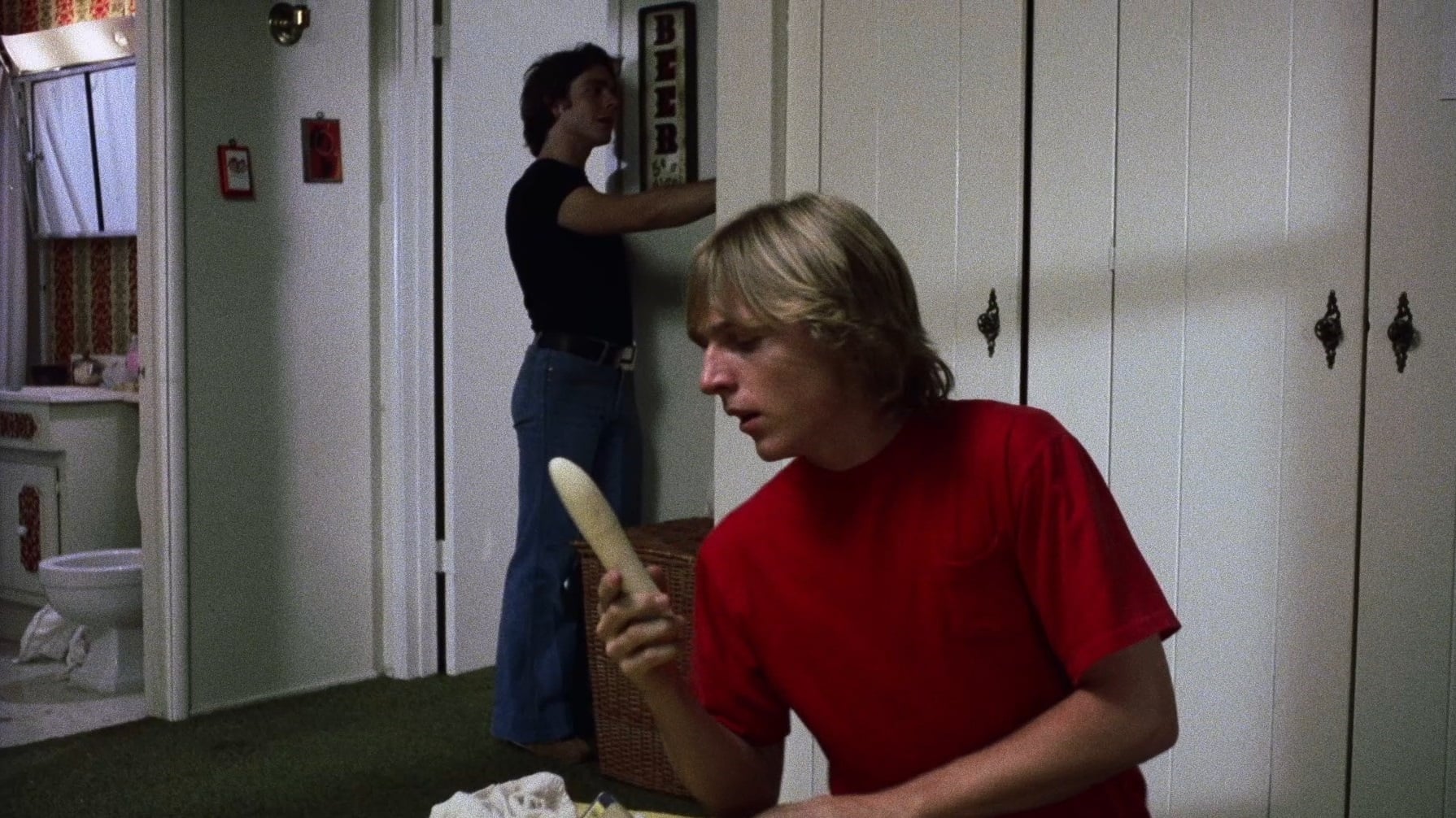
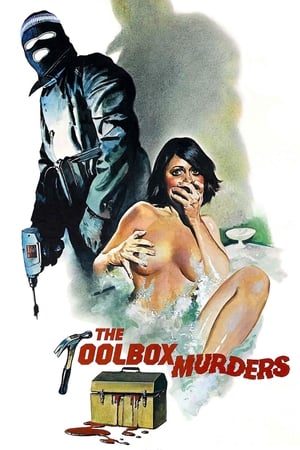
The Toolbox Murders
Bit by bit...By bit he carved a nightmare!
1978 • 1h 33min • ★ 5.473/10 • United States of America
Directed by: Dennis Donnelly
Cast: Cameron Mitchell, Pamelyn Ferdin, Wesley Eure, Aneta Corsaut, Nicolas Beauvy
A serial killer, plagued by the memory of a fatal car accident, uses various tools to murder female tenants of a Los Angeles apartment complex, then abducts a teenaged girl who lives there with her family. When the police express doubt that the murders are connected to the girl's disappearance, her brother sets out to search for her on his own.
“The Toolbox Murders” is a slasher film released in 1978, directed by Dennis Donnelly. The film follows the investigation of a series of brutal murders in an apartment complex, all of which involve the use of tools from a toolbox.
Some of the key characteristics of “The Toolbox Murders” include its use of suspense and tension to build a sense of unease and terror, as well as its graphic depictions of violence and gore.
The film is also notable for its focus on the psychological motivations of the killer, which is a departure from many other slasher films of the era.
In addition, “The Toolbox Murders” has been noted for its atmospheric and moody cinematography, which creates a sense of claustrophobia and dread in the viewer. The film’s low budget and amateurish acting have also contributed to its status as a cult classic.
Overall, “The Toolbox Murders” is a challenging and disturbing film that has earned a reputation as one of the more unsettling entries in the slasher genre.
While its violence and gore may be off-putting to some viewers, it is a significant example of the genre’s use of suspense and terror to create a memorable viewing experience.
- In a quiet apartment complex in Los Angeles, a deranged handyman goes on a killing spree, savagely...
- Cameron Mitchell, Wesley Eure, Tim Donnelly (Actors)
- Dennis Donnelly (Director)
- English (Publication Language)
- Audience Rating: R (Restricted)
Cannibal Ferox (1981)


Cannibal Ferox
They raped and murdered his sister while he watched helplessly. Now it's his turn to make them die slowly.
1981 • 1h 33min • ★ 5.4/10 • Italy
Directed by: Umberto Lenzi
Cast: Giovanni Lombardo Radice, Lorraine De Selle, Danilo Mattei, Zora Kerova, Walter Lucchini
Three friends out to disprove cannibalism meet two men on the run who tortured and enslaved a cannibal tribe to find emeralds, and now the tribe is out for revenge.
“Cannibal Ferox” is an Italian exploitation film directed by Umberto Lenzi and released in 1981.
The film tells the story of a group of anthropologists who travel to the Amazon rainforest to study indigenous tribes and become the victims of a group of cannibalistic savages.
The film is notorious for its graphic violence and extreme gore, including scenes of animal cruelty, torture, and cannibalism. “Cannibal Ferox” is often compared to other notorious Italian cannibal films, such as “Cannibal Holocaust” and “Eaten Alive”, which share similar themes and content.
Despite its controversial content, “Cannibal Ferox” has gained a cult following and is considered by some to be a classic of the exploitation genre.
https://youtube.com/watch?v=O9bmG0VIdsc
The film’s graphic violence and explicit content have also been the subject of numerous debates and discussions about the ethics of depicting extreme violence on screen.
While “Cannibal Ferox” remains a controversial film, it has also been credited with influencing the horror genre and the depiction of violence in film.
Its impact on the exploitation film industry is still felt today, and it has inspired other filmmakers to push the boundaries of what is considered acceptable in terms of on-screen violence and graphic content.
No products found.
Faces of Death (1978)
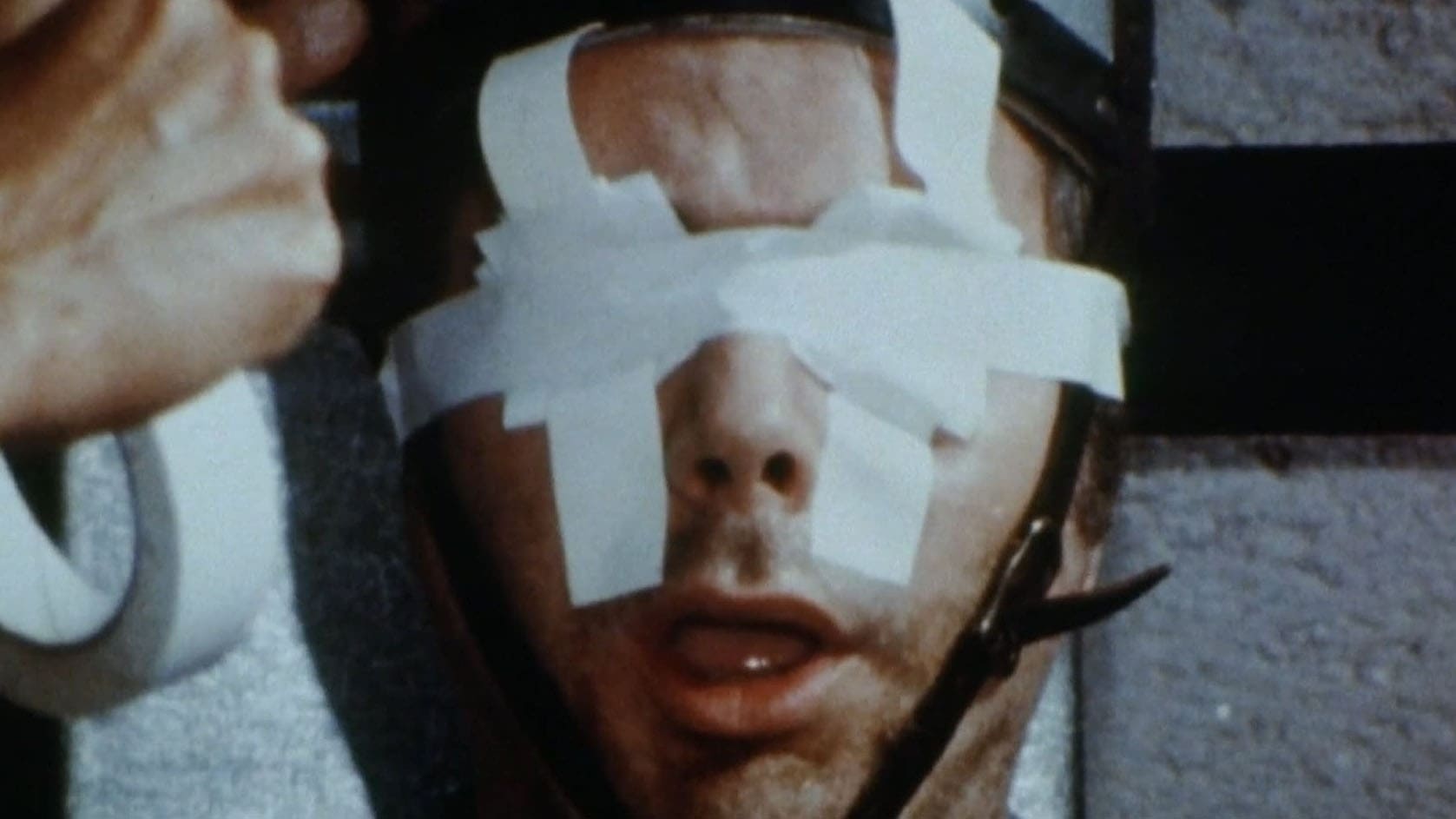
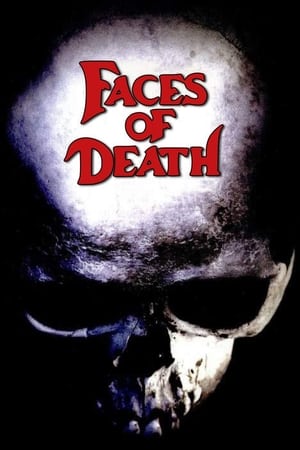
Faces of Death
Experience the graphic reality of Death, close-up...
1978 • 1h 45min • ★ 4.492/10 • United States of America
Directed by: John Alan Schwartz
Cast: Michael Carr, Samuel Berkowitz, Mary Ellen Brighton, John Alan Schwartz, Adolf Hitler
A collection of death scenes, ranging from TV-material to home-made super-8 movies. The common factor is death by some means.
“Faces of Death” is a controversial documentary film that was released in 1978. The film is presented as a collection of real-life footage that allegedly depicts people being killed, maimed, and injured in various ways, including through accidents, animal attacks, executions, and other violent acts.
The film was marketed as a “shockumentary” and claimed to show “the most dangerous film ever made.”
The authenticity of the footage presented in the film has been widely disputed, with many critics and viewers suggesting that much of it is staged or fabricated. Some have also criticized the film for its gratuitous and exploitative use of violence and death, and for its lack of any real narrative or artistic merit.
Despite its controversial content, “Faces of Death” has achieved a cult following and has been credited with influencing the “found footage” genre of horror films.
However, the film’s legacy has been the subject of ongoing debate, with many critics arguing that it perpetuates harmful attitudes towards violence and death, and contributes to a culture of desensitization and voyeurism.
- Factory sealed DVD
- Samuel Berkowitz, Michael Carr, Mary Ellen Brighton (Actors)
- Andrew Theopolis (Director) - James B. Schwartz (Writer)
- English (Publication Language)
- Audience Rating: Unrated (Not Rated)
Nekromantik (1988)
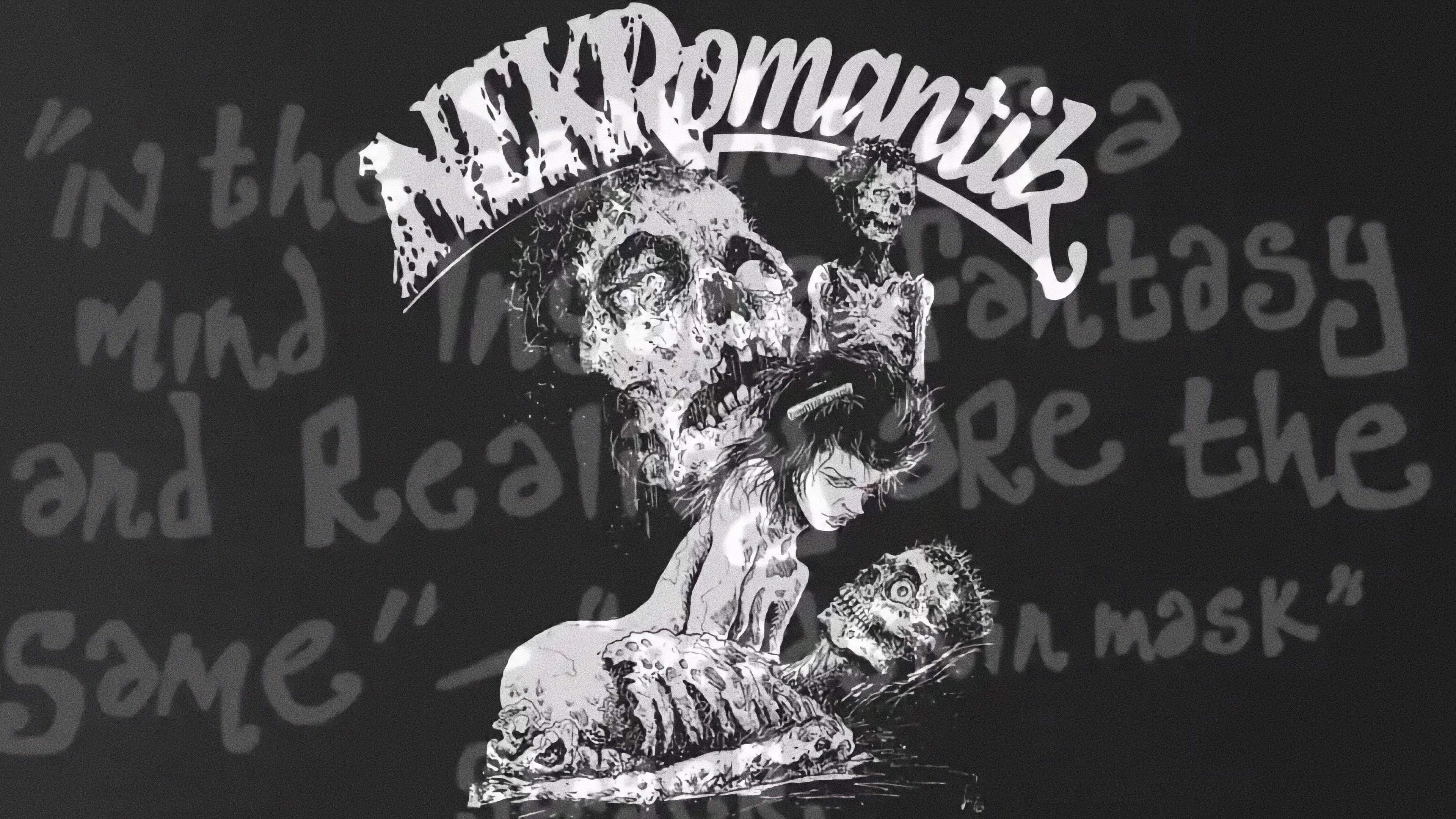
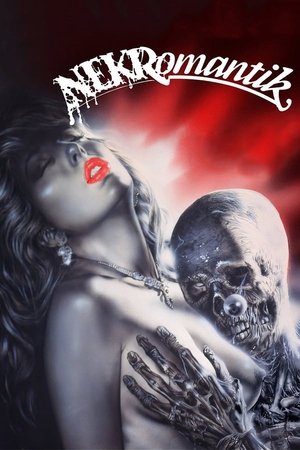
Nekromantik
Death is just the Beginning
1988 • 1h 11min • ★ 5.1/10 • Germany
Directed by: Jörg Buttgereit
Cast: Beatrice Manowski, Harald Lundt, Colloseo Schulzendorf, Volker Hauptvogel, Patricia Leipold
A necrophilic street sweeper who cleans up after grisly accidents brings home a corpse for him and his girlfriend to enjoy sexually, but is dismayed to see that she prefers the corpse over him.
“Nekromantik” is a horror film released in 1988, directed by Jörg Buttgereit. The film follows the story of a couple who are fascinated with death and begin to engage in increasingly disturbing behavior, including collecting and preserving body parts.
Some of the key characteristics of “Nekromantik” include its graphic depictions of violence and gore, as well as its highly provocative and controversial subject matter.
The film’s use of shock tactics and its focus on taboo and transgressive behavior have made it a highly divisive and polarizing work of horror cinema.
In addition, “Nekromantik” has been noted for its highly stylized cinematography and its use of surreal imagery to create a dreamlike and disturbing atmosphere.
https://youtube.com/watch?v=bphv6P64gg8
The film’s soundtrack, which features a mix of classical music and industrial noise, also contributes to its unsettling tone.
Overall, “Nekromantik” is a highly challenging and provocative film that pushes the boundaries of good taste and confronts the viewer with highly unsettling subject matter.
While its content is undeniably difficult and disturbing, it remains an important work of horror cinema that continues to inspire debate and controversy among audiences and critics alike.
- Jorg Buttgereit, Volker Hauptvogel, Daktari Lorenz (Actors)
- Jorg Buttgereit (Director) - Manfred O. Jelinski (Producer)
- English (Subtitle)
- English (Publication Language)
- Audience Rating: NR (Not Rated)
Wake in Fright (1971)
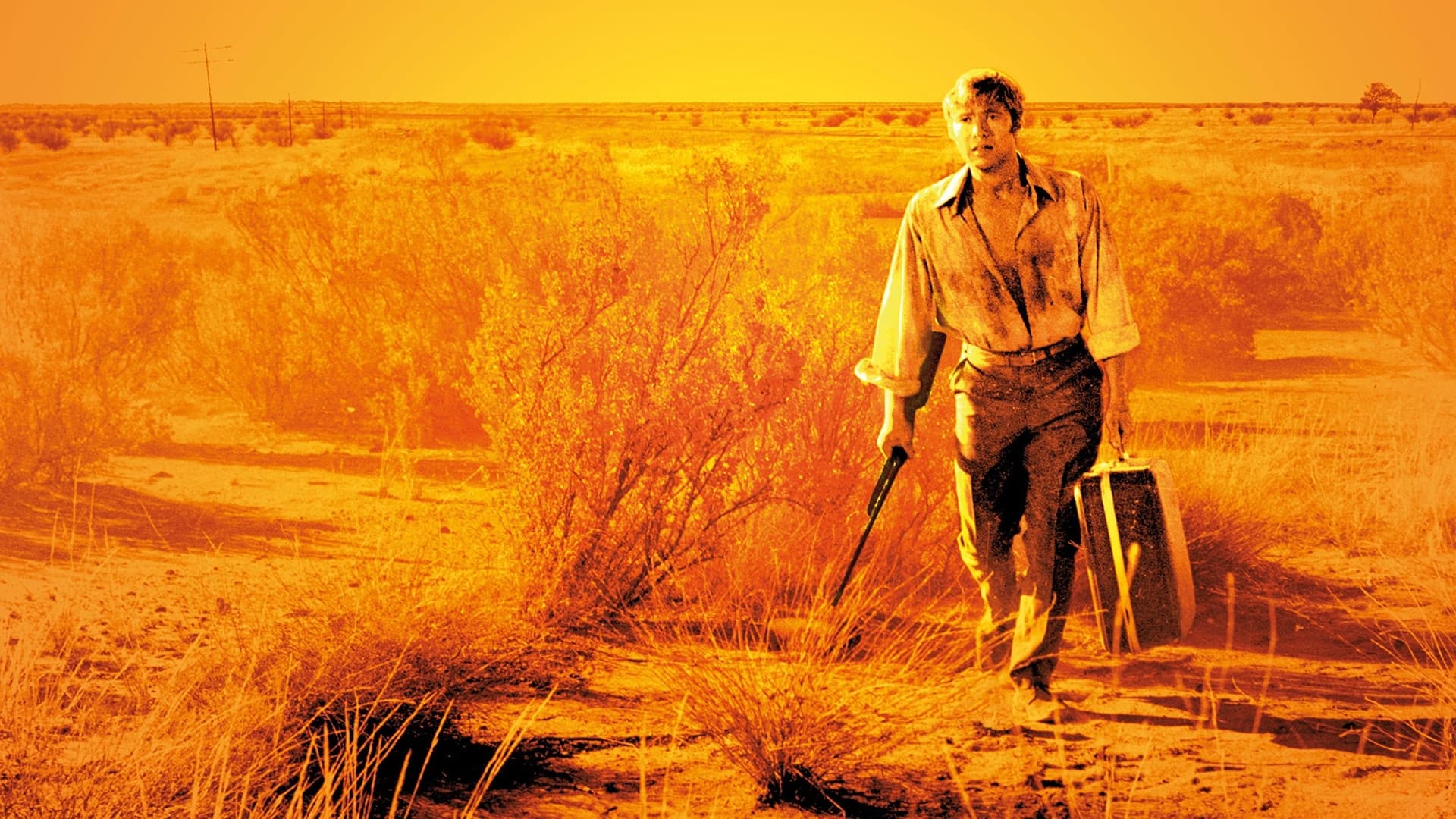
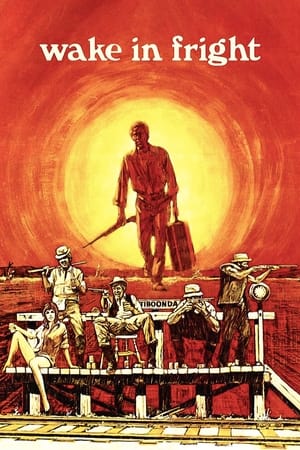
Wake in Fright
Have a drink, mate? Have a fight, mate? Have some dust and sweat, mate? There's nothing else out here.
1971 • 1h 49min • ★ 7.313/10 • Australia
Directed by: Ted Kotcheff
Cast: Gary Bond, Donald Pleasence, Chips Rafferty, Sylvia Kay, Jack Thompson
A young schoolteacher descends into personal moral degradation after finding himself stranded in a brutal, menacing town in outback Australia.
Wake in Fright” is a 1971 Australian psychological thriller film directed by Ted Kotcheff. The film follows a young schoolteacher named John Grant (played by Gary Bond), who becomes stranded in a remote town in the Australian outback after losing all his money in a gambling binge.
Over the course of several days, Grant is exposed to the town’s excessive drinking, hunting, and violence, which pushes him to the brink of madness.
The film is known for its intense and disturbing portrayal of the Australian outback and the culture of toxic masculinity that pervades it.
“Wake in Fright” has been praised for its cinematography and atmospheric tension, as well as its exploration of themes such as alienation, masculinity, and the dark side of human nature.
The film was controversial upon its release due to its graphic content, particularly a brutal kangaroo hunt sequence, which led to accusations of animal cruelty.
However, the film’s impact on the Australian film industry and its exploration of taboo subjects have made it a cult classic and an important piece of Australian cinema.
In recent years, “Wake in Fright” has been rediscovered and reappraised by audiences and critics alike. The film has been restored and re-released in various formats, and its influence on contemporary filmmakers has been acknowledged.
The film’s depiction of toxic masculinity and the psychological toll of living in isolated environments continues to resonate with audiences today.
The Beyond (1981)
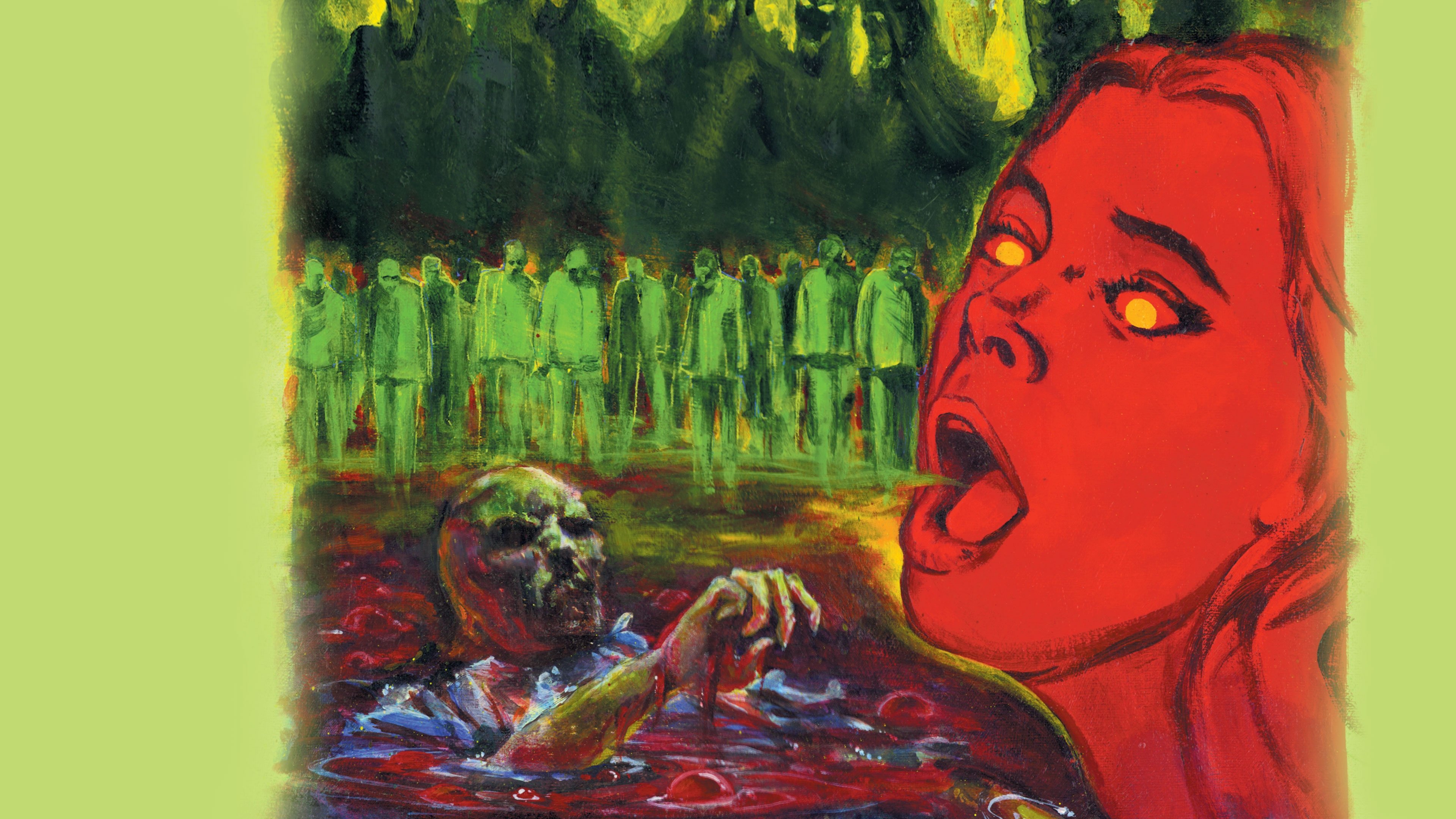
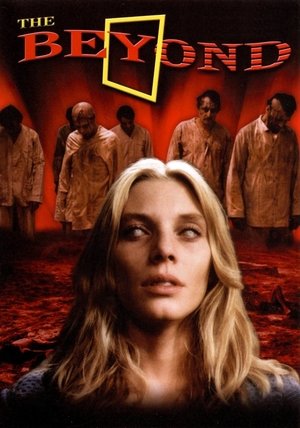
The Beyond
Beyond death... Beyond Evil... Beyond the dreaded gates of hell.
1981 • 1h 28min • ★ 6.922/10 • Italy
Directed by: Lucio Fulci
Cast: Catriona MacColl, David Warbeck, Cinzia Monreale, Antoine Saint-John, Veronica Lazăr
A young woman inherits an old hotel in Louisiana where, following a series of supernatural "accidents", she learns that the building was built over one of the entrances to Hell.
“The Beyond” is a horror film directed by Italian filmmaker Lucio Fulci and released in 1981.
The film tells the story of a young woman who inherits an old hotel in Louisiana that was built over one of the seven gateways to Hell.
As she and others begin to explore the hotel, they unwittingly unleash a series of supernatural forces that threaten to destroy them all.
“The Beyond” is known for its graphic and disturbing depictions of violence and gore, and has been praised for its atmospheric and surreal style.
The film is often cited as one of the best examples of Italian horror cinema and has achieved a cult following among horror fans.
Despite its cult status, “The Beyond” has also been criticized for its extreme violence and gore, as well as its lack of narrative coherence. The film’s graphic and disturbing content has been interpreted as a reflection of Fulci’s interest in exploring the darker aspects of human nature, and has been compared to the work of other “splatter” filmmakers of the time.
Overall, “The Beyond” is a highly regarded and influential film in the horror genre, known for its unique visual style and its bold and uncompromising use of graphic violence and gore.
- A young woman inherits an old hotel only to find it sits atop a gateway to Hell and all manner of...
- Antoine Saint-John, Catriona MacColl, Cinzia Monreale (Actors)
- Lucio Fulci (Director)
- English (Subtitle)
- English (Publication Language)
Zombie (1979)
“Zombie” is a horror film released in 1979, directed by Italian filmmaker Lucio Fulci. The film is also known by its original Italian title “Zombi 2” and was marketed as a sequel to George A. Romero’s “Dawn of the Dead” in some territories.
Some of the key characteristics of “Zombie” include its graphic depictions of violence and gore, as well as its focus on the slow, shuffling zombie archetype that has become a staple of the horror genre.
The film is also notable for its use of atmospheric and moody cinematography, which creates a sense of dread and foreboding throughout.
In addition, “Zombie” has been noted for its effective use of practical effects to create its gruesome and realistic violence, particularly in its infamous eye-gouging scene.
The film’s soundtrack, which features a mix of eerie soundscapes and haunting music, also contributes to its tense and unsettling atmosphere.
Overall, “Zombie” is a classic example of the Italian horror genre known as “giallo,” which combines elements of thriller, horror, and suspense to create a unique and memorable viewing experience. Its mix of graphic violence, moody atmosphere, and suspenseful storytelling make it a must-see for horror fans looking for a taste of the macabre.
- Tisa Farrow, Ian McCulloch, Richard Johnson (Actors)
- Lucio Fulci (Director)
- Audience Rating: Unrated (Not Rated)
Grindhouse (2007)
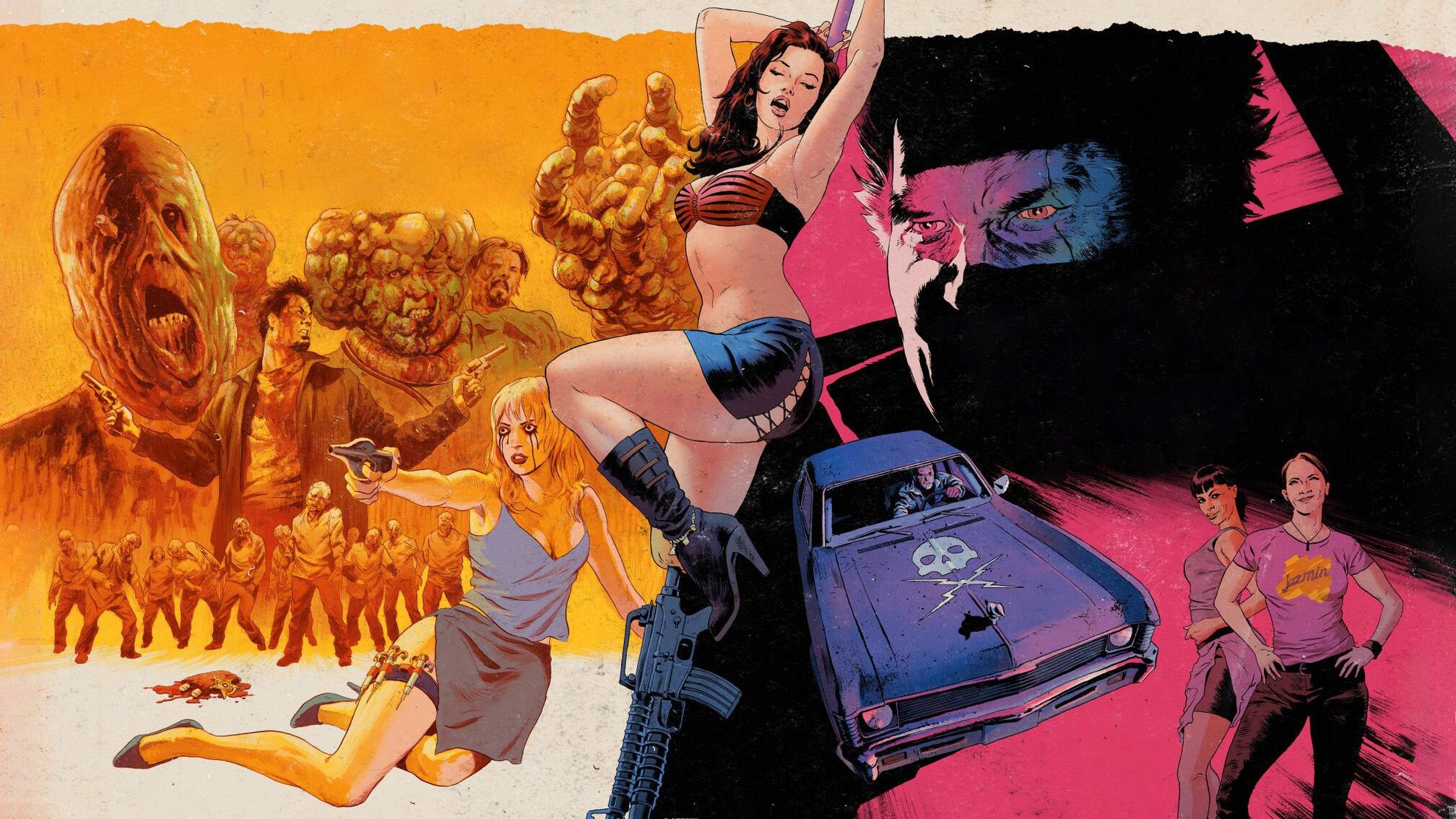
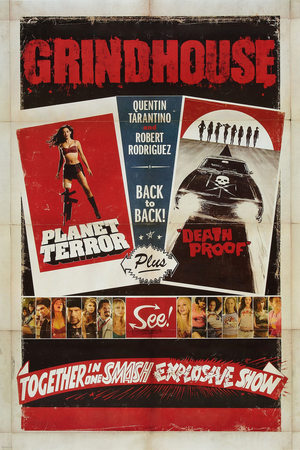
Grindhouse
A double feature that'll tear you in two!
2007 • 3h 11min • ★ 7/10 • United States of America
Directed by: Quentin Tarantino
Cast: Kurt Russell, Rose McGowan, Zoë Bell, Freddy Rodríguez, Rosario Dawson
Grindhouse combines Robert Rodriguez's Planet Terror, a horror comedy about a group of survivors who battle zombie-like creatures, and Quentin Tarantino's Death Proof, an action thriller about a murderous stuntman who kills young women with modified vehicles. It is presented as a double feature with fictitious exploitation trailers preceding each segment.
“Grindhouse” is a 2007 American exploitation film directed by Robert Rodriguez and Quentin Tarantino.
The film is a double feature that includes two separate feature-length segments, “Planet Terror” by Robert Rodriguez and “Death Proof” by Quentin Tarantino.
“Grindhouse” is an homage to the exploitation films of the 1970s, which were often low-budget films that featured graphic violence, sex, and other taboo subjects.
The film is shot in a style that replicates the look and feel of these films, including intentionally scratched and damaged film stock, missing reels, and fake trailers for other exploitation films.
“Planet Terror” is a horror film about a group of survivors of a biochemical weapon that turns people into flesh-eating zombies. “Death Proof” is a slasher film about a psychotic stuntman who uses his car to kill young women.
“Grindhouse” was not a commercial success, but it has gained a cult following and has been recognized for its contribution to the exploitation film genre.
The film’s visual style, use of practical effects, and celebration of low-budget filmmaking have inspired other filmmakers to explore similar themes and techniques. The film’s fake trailers for other exploitation films have also been expanded into their own feature-length films, such as “Machete” and “Hobo with a Shotgun”.
- Grindhouse - Blu-ray Brand New
- Rose McGowan, Bruce Willis, Freddy Rodriguez (Actors)
- Quentin Tarantino (Director)
- English (Subtitle)
- English (Publication Language)
Death Race 2000 (1975)


Death Race 2000
In the year 2000, hit and run driving is no longer a felony. It's the national sport!
1975 • 1h 20min • ★ 6.124/10 • United States of America
Directed by: Paul Bartel
Cast: David Carradine, Simone Griffeth, Sylvester Stallone, Mary Woronov, Roberta Collins
In a boorish future, the government sponsors a popular, but bloody, cross-country race in which points are scored by mowing down pedestrians. Five teams, each comprised of a male and female, compete using cars equipped with deadly weapons. Frankenstein, the mysterious returning champion, has become America's hero, but this time he has a passenger from the underground resistance.
“Death Race 2000” is an action comedy film directed by Paul Bartel and released in 1975. The film is set in a dystopian future in which the government sponsors a cross-country road race in which contestants earn points for killing pedestrians.
The main character, Frankenstein, is a popular driver who has been reconstructed after multiple accidents, and who becomes a symbol of rebellion against the authoritarian regime.
The film is known for its over-the-top violence and satire, as well as its campy humor and political commentary.
“Death Race 2000” has been interpreted as a commentary on the dangers of government-sponsored violence and the cult of celebrity, as well as a parody of the action movie genre.
Despite its controversial subject matter, “Death Race 2000” has become a cult classic and has been credited with influencing the development of the post-apocalyptic and action movie genres. The film’s colorful characters, outrageous violence, and social commentary have made it a favorite among fans of cult cinema and satire.
- "Low budget films allow one to experiment, to take chances with a zany idea like DEATH RACE 2000....
- David Carradine, Sylvester Stallone, Simone Griffeth (Actors)
- Paul Bartel (Director)
- Audience Rating: R (Restricted)
Faster, Pussycat! Kill! Kill! (1965)
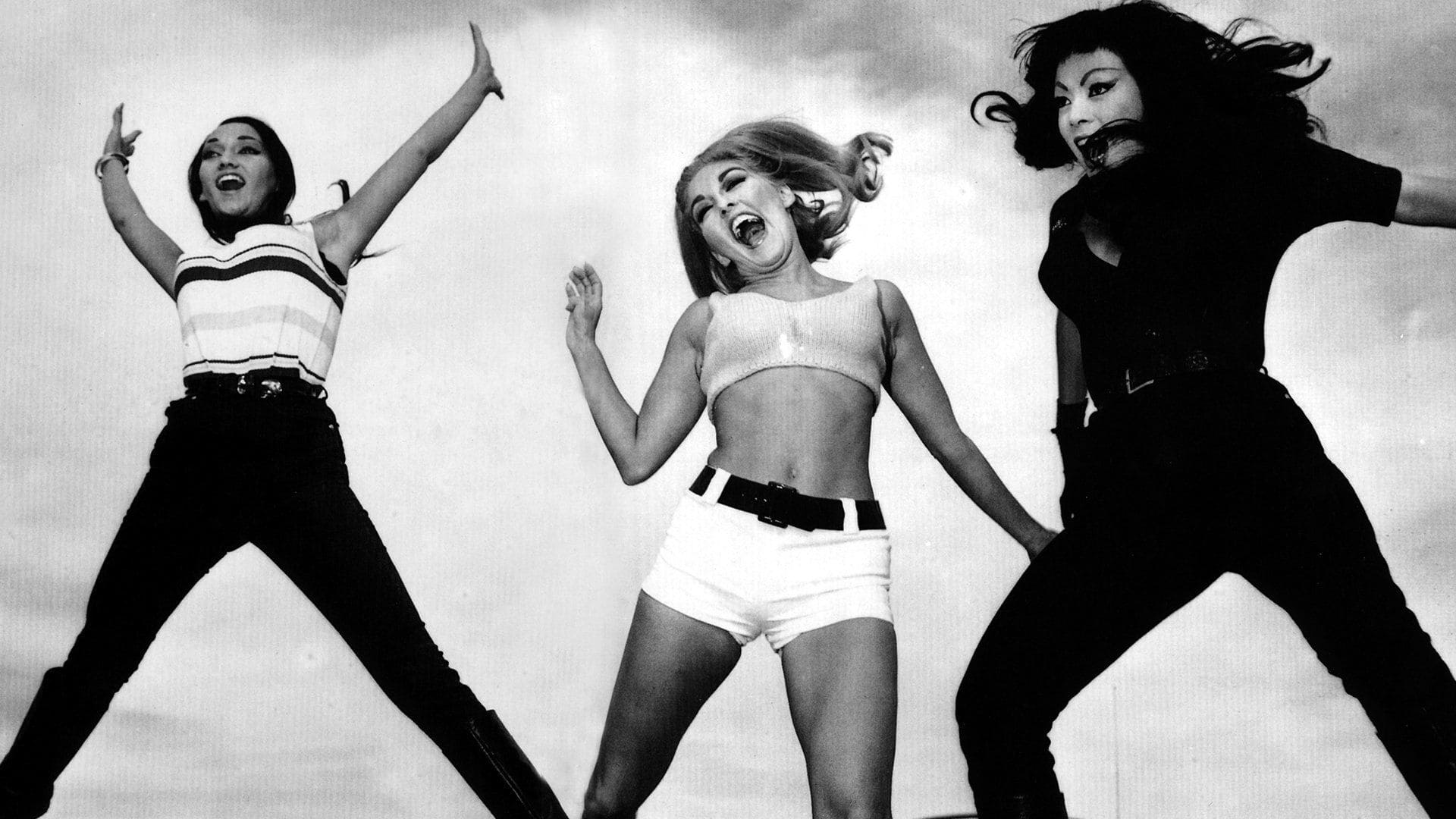
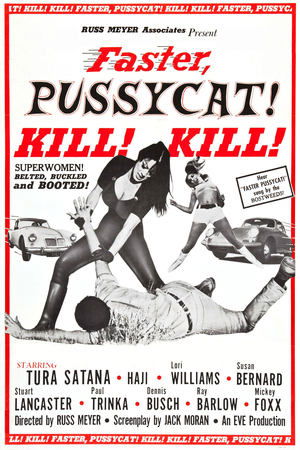
Faster, Pussycat! Kill! Kill!
Go-Go For a Wild Ride With the ACTION GIRLS!
1965 • 1h 23min • ★ 6.341/10 • United States of America
Directed by: Russ Meyer
Cast: Tura Satana, Haji, Lori Williams, Sue Bernard, Stuart Lancaster
A trio of thrill-seeking go-go dancers kidnap a young girl and attempt to seduce an old rancher and his two sons out of their small fortune, but their scheme doesn't play out as intended.
“Faster, Pussycat! Kill! Kill!” is a 1965 cult classic exploitation film directed by Russ Meyer. The film follows the story of three go-go dancers, Varla (played by Tura Satana), Rosie (played by Haji), and Billie (played by Lori Williams), who set out on a spree of murder and mayhem in the California desert.
The film has gained a cult following over the years due to its unique blend of sex, violence, and dark humor. It is also notable for its strong, independent female characters, who defy traditional gender roles and take control of their own destinies.
Despite its controversial content, “Faster, Pussycat! Kill! Kill!” has been praised for its innovative cinematography, with Meyer’s use of wide-angle lenses and fast-paced editing creating a sense of frenzied energy and heightened tension throughout the film.
- Faster, Pussycat! Kill! Kill! (UK) ( Faster Pussycat! Wham! Bang! ) ( Faster, Pussycat! Go! Go! )
- Faster, Pussycat! Kill! Kill! (UK)
- Faster Pussycat! Wham! Bang!
- Faster, Pussycat! Go! Go!
- Haji, Stuart Lancaster, Tura Satana (Actors)
The Hills Have Eyes (1977)
“The Hills Have Eyes” is a horror film directed by Wes Craven and released in 1977. The movie revolves around the Carter family, who are traveling through the California desert on their way to California.
They end up stranded in a remote area and are attacked by a group of mutated and deranged cannibals who live in the hills.
The movie explores the themes of survival, family, and the darkness that can reside in human nature. The film’s violent and gruesome scenes shocked audiences at the time and sparked controversy. However, it also gained a cult following and is now considered a classic in the horror genre.
The success of “The Hills Have Eyes” led to a sequel in 1985 and a remake in 2006, both of which were also directed by Craven. The film’s influence can be seen in other horror movies that explore similar themes and use similar techniques to shock and terrify audiences.
- Shrink-wrapped
- Dee Wallace, Michael Berryman, John Steadman (Actors)
- Wes Craven (Director)
- Spanish (Publication Language)
- Audience Rating: R (Restricted)
Coffy (1973)

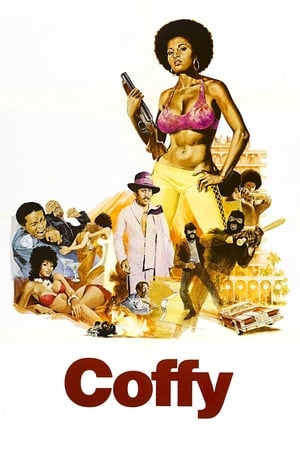
Coffy
The Baddest One-Chick Hit-Squad that ever hit town!
1973 • 1h 30min • ★ 6.632/10 • United States of America
Directed by: Jack Hill
Cast: Pam Grier, Robert DoQui, Sid Haig, Booker Bradshaw, William Elliott
After her younger sister gets involved in drugs and is severely injured by contaminated heroin, a nurse sets out on a mission of vengeance and vigilante justice, killing drug dealers, pimps, and mobsters who cross her path.
“Coffy” is a 1973 American blaxploitation film directed by Jack Hill and starring Pam Grier in the lead role. The film follows the story of Coffy, a nurse who sets out to avenge her younger sister who is addicted to drugs.
Coffy discovers that corruption runs deep in the local drug underworld and that even the police are not to be trusted. She takes matters into her own hands and begins a one-woman crusade against the drug dealers and pimps who have ruined her community.
The film was a commercial success and helped to establish Pam Grier as a leading lady in the action genre. It was also noted for its strong feminist themes and its portrayal of a black woman taking charge and fighting back against oppression and injustice.
“Coffy” has since become a cult classic and is often cited as one of the most influential blaxploitation films of all time.
- DVD
- Multiple Formats, Anamorphic, Closed-captioned
- Spanish (Subtitled), French (Subtitled), Spanish (Dubbed)
- 1
- 91
City of the Living Dead (1980)
“City of the Living Dead” is a horror film directed by Italian filmmaker Lucio Fulci and released in 1980. The film is also known as “Paura nella città dei morti viventi” (translated as “Fear in the City of the Living Dead”).
The movie’s plot centers on a priest named Father Thomas (played by Fabrizio Jovine) who commits suicide in the small town of Dunwich, Massachusetts. His death causes a rip in the fabric of reality, leading to the rise of the dead.
A psychic journalist named Peter Bell (played by Christopher George) and a psychic named Mary (played by Catriona MacColl) team up to close the portal and stop the undead from taking over the world.
The film is known for its graphic and gruesome scenes, including a notorious sequence in which a character vomits up his own intestines. “City of the Living Dead” is also notable for its surreal and dreamlike imagery, which has become a trademark of Fulci’s films.
Despite its notoriety, “City of the Living Dead” received mixed reviews upon its initial release. However, the film has since gained a cult following and is considered by many horror fans to be a classic of the genre.
- Agren, Janet, Aste, Adelaide, D'Ausilio, Enzo (Actors)
- Audience Rating: Unrated (Not Rated)
Story of Ricky (1991)

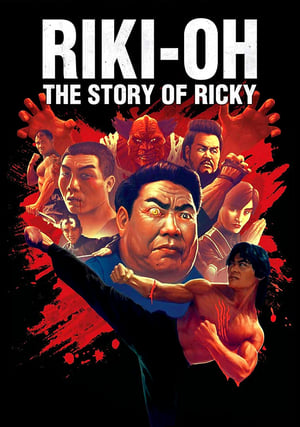
Riki-Oh: The Story of Ricky
1991 • 1h 32min • ★ 6.8/10 • Hong Kong
Directed by: Lam Nai-Choi
Cast: Louis Fan Siu-Wong, Fan Mei-Sheng, William Ho, Gloria Yip Wan-Yee, Yukari Ôshima
In 2001, where all correctional facilities have been privatized, martial artist Ricky finds himself victim to the corrupt system, found "guilty" of the manslaughter of an infamous crime boss.
“Story of Ricky” is a 1991 Hong Kong martial arts film directed by Lam Nai-choi, based on the Japanese manga “Riki-Oh” by Masahiko Takajo and Tetsuya Saruwatari. The film follows the story of Ricky Ho, a young man with incredible physical strength, who is sent to a corrupt prison after avenging the death of his girlfriend.
Ricky arrives at the prison, where he is immediately introduced to the brutal and violent nature of the inmates and guards.
He quickly discovers that the prison is controlled by a group of corrupt officials who use the inmates for their own personal gain.
Ultimately, Ricky’s mission for justice leads him to confront the head of the corrupt officials, a man known only as “The Assistant Warden”. In a brutal and bloody final battle, Ricky faces off against the Assistant Warden, using all of his incredible strength to take down the corrupt system once and for all.
“Story of Ricky” is a cult classic and is known for its over-the-top violence and gore. The film has gained a following for its unique blend of martial arts, horror, and dystopian elements, making it a standout in the Hong Kong film industry.
- Asian films from 1991 by Ngai Kai Lam with Sui-Wong Fan and Ho Ka-kui.
- English (Subtitle)
Ms .45 (1981)
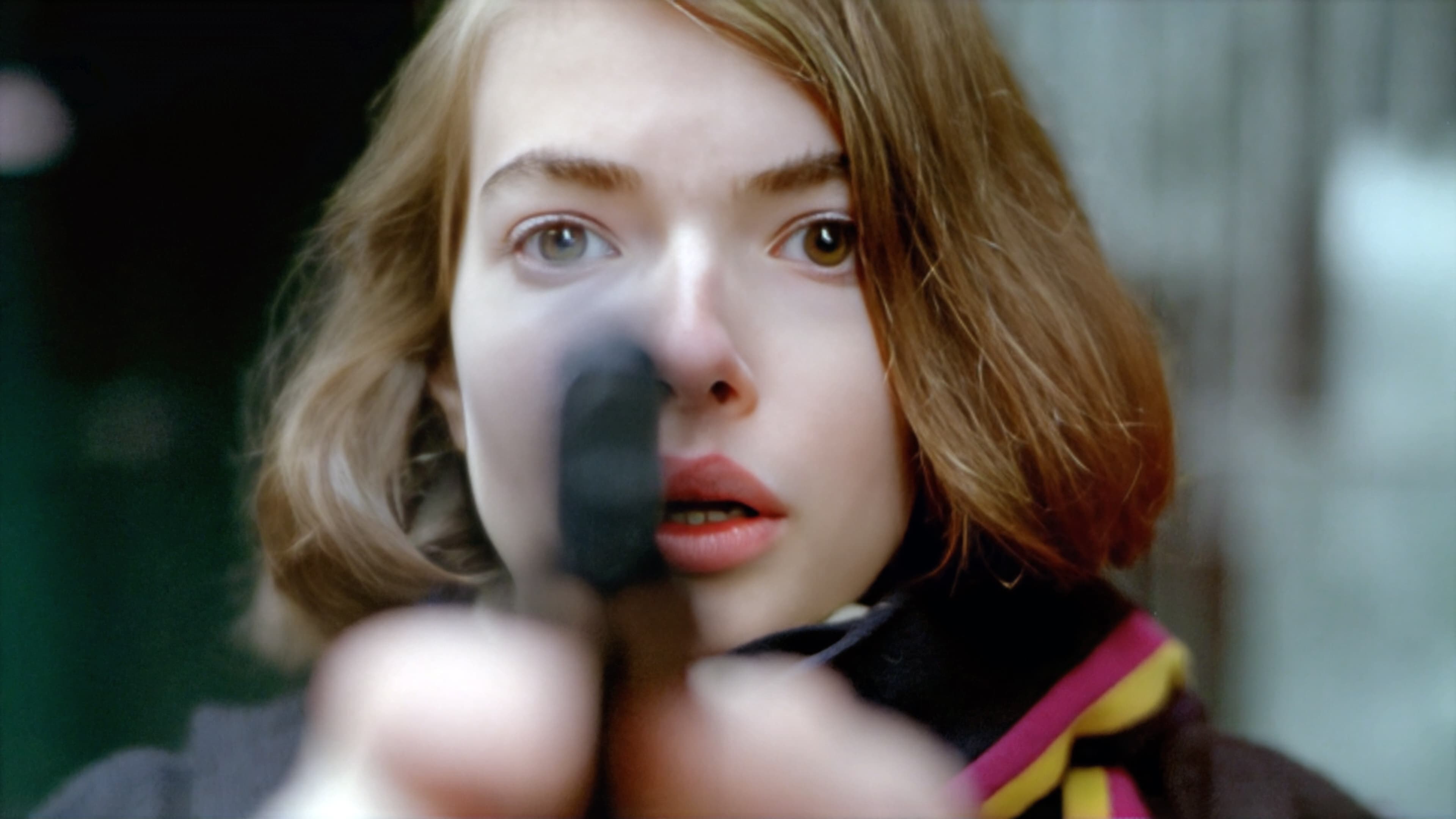
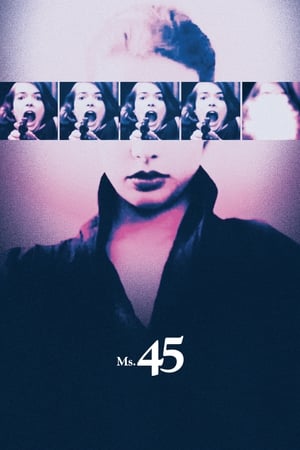
Ms .45
She was abused and violated. It will never happen again!
1981 • 1h 21min • ★ 6.665/10 • United States of America
Directed by: Abel Ferrara
Cast: Zoë Lund, Albert Sinkys, Darlene Stuto, Abel Ferrara, Helen McGara
A shy and mute seamstress goes insane after being attacked and raped twice in one day. She wanders the New York streets at night in a sexy black dress with her attacker's gun strapped to her garter belt, blowing away any man who tries to pick her up.
“Ms. 45” is a 1981 exploitation film directed by Abel Ferrara. The film follows the story of Thana (played by Zoë Tamerlis), a mute seamstress who is assaulted twice in one day, and subsequently goes on a killing spree against the men of New York City.
The film is notable for its graphic depictions of violence and sexual assault, and has been criticized for its portrayal of women as victims and the use of assault as a plot device.
However, it has also been praised for its subversion of the revenge fantasy trope, with Thana’s violent acts ultimately leading to her own demise.
“Ms. 45” has been cited as a cult classic, and is often discussed in the context of feminist cinema and the portrayal of women in film.
It has also been noted for its gritty depiction of New York City in the early 1980s, and for its use of minimal dialogue and atmospheric music to create a sense of tension and unease.
- Zoe Lund, Albert Sinkys, Darlene Stuto (Actors)
- Abel Ferrara (Director)
- Audience Rating: R (Restricted)
Foxy Brown (1974)
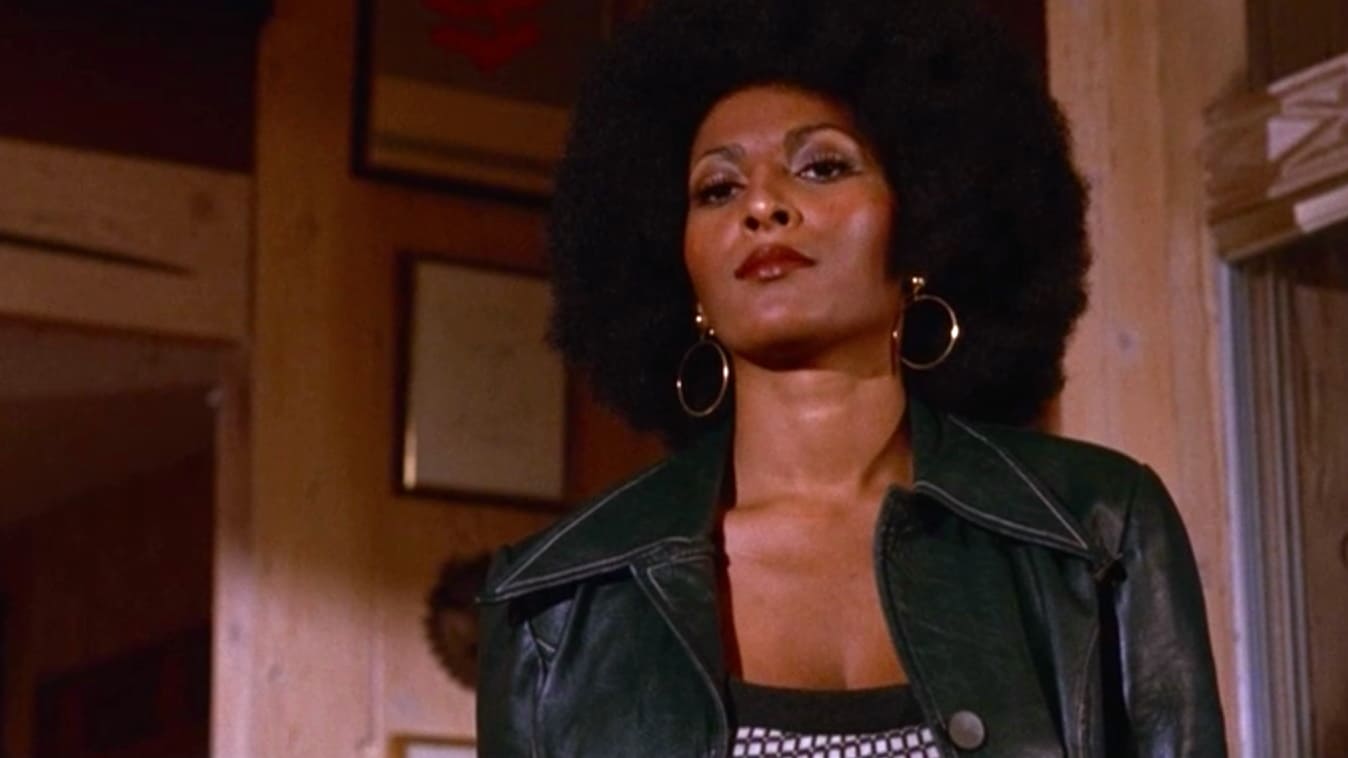
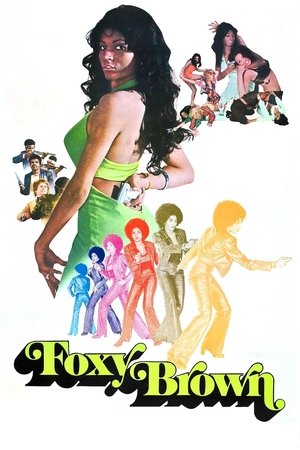
Foxy Brown
A chick with drive who don't take no jive!
1974 • 1h 34min • ★ 6.227/10 • United States of America
Directed by: Jack Hill
Cast: Pam Grier, Antonio Fargas, Peter Brown, Terry Carter, Kathryn Loder
A voluptuous black woman takes a job as a high-class prostitute in order to get revenge on the mobsters who murdered her boyfriend.
“Foxy Brown” is an American blaxploitation film released in 1974 and directed by Jack Hill. The movie stars Pam Grier in the lead role as Foxy Brown, a tough and resourceful woman seeking revenge against a drug syndicate that killed her boyfriend.
The film is known for its portrayal of a strong, empowered African-American woman who takes matters into her own hands and fights against injustice. “Foxy Brown” tackles issues of race, gender, and power, and has been credited with empowering African-American women and inspiring future female action heroes.
The film was a commercial success and is now considered a classic of the blaxploitation genre. It has been praised for its progressive themes, strong performances, and stylish direction. “Foxy Brown” is also notable for its soundtrack, which features soul and funk music from the era.
Pam Grier’s performance in “Foxy Brown” helped establish her as one of the most iconic actresses of the blaxploitation era, and the film’s impact can be seen in subsequent films and TV shows that feature strong female leads and tackle issues of race and gender.
- Pam Grier, Antonio Fargas, Peter Brown (Actors)
- Jack Hill (Director)
- Spanish, French (Subtitles)
- Audience Rating: R (Restricted)
Characteristics Of Exploitation Films
Exploitation films possess a distinct set of characteristics that set them apart from mainstream cinema.
At their core, these films aim to attract viewers by emphasizing content that may be considered scandalous, sensational, or taboo.
This content often includes:
- Graphic violence and gore,
- Explicit sexual themes and nudity,
- Drug use and criminal activity,
- Culturally forbidden subjects.
Their marketing strategies are just as bold as their content, with lurid posters and shocking trailers crafted to grab attention.
It’s about shock value – highlighting the most thrilling parts to draw in audiences looking for something outside the norm.
Audience targeting for exploitation films is specific and strategic.
They often aim for niche markets – perhaps a subculture fascinated by biker gangs, or enthusiasts of supernatural horror.
The titles themselves sometimes give away the intent, with films like Blood Feast or Faster, Pussycat! Kill! Kill!
promising an experience that mainstream movies would likely shy away from.
Within the narrative structure, there’s often a disregard for conventional storytelling.
Plots might be loose, sometimes serving as mere vehicles for showcasing the provocative themes.
It’s not unusual for these films to have abrupt beginnings and endings – a reflection of the urgent and raw nature of the content they present.
Technical qualities in exploitation films vary greatly.
Some are low-budget efforts barely clinging to professional production values while others exhibit surprising levels of craft and creativity.
Either way, there’s a certain graininess or roughness that can be part of the appeal, with the imperfections lending an air of authenticity to the gritty subjects they explore.
What should not be overlooked is the underlying drive for profitability.
Exploitation films emerged as commercially driven pieces, designed to be made quickly and earn returns rapidly.
They often take advantage of current events or social anxieties, adding an immediacy to their relevance and, by extension, their draw with audiences.
Though exploitation films may not operate within the bounds of what’s traditionally accepted in cinema, their influence cannot be undermined.
Through pushing the envelope, they’ve propelled change within the film industry, expanding the boundaries of what can be depicted on screen and how stories can be told.
Types Of Exploitation Films
Exploitation films come in various flavors, each catering to a particular taste or taboo.
One widespread type is the sexploitation film, which explores sexual themes more explicitly than mainstream cinema once dared.
Films like Faster, Pussycat! Kill! Kill! and Vixen! broke new ground in how sexuality could be depicted on screen.
Horror is another foundational category within exploitation, often pushing the envelope on gore and fright.
Blood Feast stands as a key example, capitalizing on audiences’ hunger for shock and awe.
Such horror exploitation films stake their claim by showcasing what’s usually left to the imagination.
We find exploitation cinema branching into subgenres, all with unique features:
- Blaxploitation – Exploiting African-American culture with iconic films like Shaft and Super Fly.
- Nunsploitation – Focused on the often hypocritical portrayal of nuns and religious themes.
- Mondo films – Purporting to be real-world documentaries, these films offer a voyeuristic glimpse into strange and exotic customs.
In action exploitation, movies like Mad Max and Death Wish offered adrenaline-fueled narratives often absent in mainstream movies.
Audiences reveled in the sheer spectacle of stunts and high-paced sequences that low budgets surprisingly never hindered.
The category of cannibal films took exploitation to new, often controversial heights.
With notorious titles like Cannibal Holocaust, the genre’s stark and brutal visuals tested the limits of censorship and audience tolerance.
Subsequent discussions would often hinge on whether such portrayals were necessary or mere shock value.
Science fiction exploitation films exploited technological wonders or fears of the future.
Incorporating ambitious special effects and cosmic narratives, these films, such as Galaxy of Terror, provided a peculiar fusion of imagination and exploitation techniques.
These types showcase exploitation cinema’s chameleon-like ability to adapt and thrive in varying cultural landscapes.
Viewing habits, historical context, and technical ingenuity all play their part in the enduring legacy of these films.
Controversies Surrounding Exploitation Films
Exploitation films have courted controversy due largely to their graphic content and boundary-pushing themes.
Frequently criticized for their sensationalism, these films have been labeled as obscene or morally corrupting.
Yet, the debate continues over whether they reflect societal issues or contribute to them.
One of the most significant controversies stems from films that appear to glorify violence.
Works such as Cannibal Holocaust have prompted public outcry with depictions of extreme gore and cruelty.
The discordance between artistic expression and perceived ethical responsibility remains a sticking point for critics and audiences alike.
Another area of contention resides in the portrayal of women and minorities.
Films in genres like sexploitation and blaxploitation often perpetuate stereotypes, drawing ire for their one-dimensional characters and exploitation of specific demographics:
- Blaxploitation films like Foxy Brown have been both praised for increasing the visibility of African American actors and criticized for reinforcing negative racial stereotypes.
- Sexploitation films are frequently targeted for their objectification of women, though some argue that they provide a space for exploring taboo subjects.
Films pushing the envelope are no strangers to legal issues, either.
Obscenity trials and censorship battles have plagued numerous exploitation films, subjecting them to cuts or outright bans in various jurisdictions.
The conflict between free speech and public decency has led to a number of landmark cases influencing the broader conversation on media regulation.
Our exploration doesn’t end there, as exploitation films often reflect deep-seated societal tensions and can act as a mirror to cultural attitudes.
Whether they’re seen as pioneers in free expression or purveyors of poor taste is part of their complex legacy within the landscape of cinema.
Impact Of Exploitation Films On Mainstream Cinema
Exploitation films have left an indelible mark on mainstream cinema.
These films, often produced with low budgets and focusing on sensational content, have influenced major filmmakers and studios in various ways.
Initially seen as a form of cinema that operated on the fringes, the stylistic and thematic elements of exploitation movies have gradually seeped into the fabric of popular film culture.
Key influences include:
- Narrative techniques that push the envelope,
- Aesthetic styles that challenge conventional cinematography,
- Integration of taboo subjects into mainstream narratives.
Also, exploitation films have acted as a testing ground for new talent.
Directors like Quentin Tarantino and Robert Rodriguez cut their teeth on the grit and grind of exploitation cinema, later incorporating its elements into successful mainstream movies like Pulp Fiction and Sin City.
Their work showcases a fusion of exploitation’s raw edginess with polished production values, winning both critical acclaims and achieving box office success. Also, mainstream films have borrowed exploitation cinema’s penchant for shock value.
Films like The Hunger Games and A Clockwork Orange draw clear parallels to the dystopian and ultra-violent themes prevalent in many exploitation films.
These aspects create appeal through their audacity, often serving as a commentary on society while providing entertainment.
Finally, the marketing strategies of exploitation films have informed the promotional tactics of many mainstream releases.
The hyperbolic and sensational advertising methodologies once seen as the realm of B-movie campaigns are now commonplace in the marketing of blockbuster films.
Movie trailers, posters, and social media teasers often embrace the bombastic appeal that was a hallmark of exploitation cinema.
The interplay between exploitation films and mainstream cinema is a testament to the vibrant exchange of ideas within the film industry.
This cross-pollination has enriched the cinematic landscape, offering audiences an ever-evolving palette of film experiences.
As we jump further into the nuances of this relationship, it’s clear that the influence is multi-directional and continually evolving.
What Are Exploitation Films – Wrap Up
We’ve seen how exploitation films have left an indelible mark on the film industry, shaping the creative contours of mainstream cinema.
These once-marginalized movies have become a source of inspiration for renowned directors and have influenced the way stories are told on the big screen.
They’ve pushed boundaries and opened doors for a myriad of cinematic possibilities.
As we continue to witness the evolution of film, it’s clear that the legacy of exploitation cinema will keep informing and transforming the art form, ensuring that our movie-going experiences remain as thrilling and diverse as ever.
Frequently Asked Questions
How Have Exploitation Films Influenced Mainstream Cinema?
Exploitation films have impacted mainstream cinema through narrative techniques, aesthetic styles, and the incorporation of taboo subjects.
They have also served as a proving ground for new talent, with directors like Tarantino and Rodriguez integrating elements into successful movies.
Can You Give Examples Of Mainstream Films Influenced By Exploitation Cinema?
Mainstream films like The Hunger Games and A Clockwork Orange have drawn from the dystopian and violent themes found in exploitation cinema.
These films showcase how elements of exploitation have seeped into popular film culture.
What Elements From Exploitation Cinema Have Been Adopted By Successful Directors?
Directors such as Quentin Tarantino and Robert Rodriguez have adopted elements such as shock value, unique narrative styles, and exploration of taboo content from exploitation cinema, evident in their successful films.
Has Exploitation Cinema Contributed Anything To Film Marketing Strategies?
Yes, the marketing strategies of exploitation films, which often emphasize shock value and unique selling points, have influenced the promotional tactics used for many mainstream releases.
In What Ways Has The Interplay Between Exploitation And Mainstream Films Benefited Audiences?
The interplay between exploitation and mainstream cinema has enriched the cinematic landscape, offering a diverse range of film experiences that challenge conventions and explore new creative territories, ultimately benefiting audiences.




![Cannibal Holocaust (1980) [ NON-USA FORMAT, PAL, Reg.0 Import - France ]](https://m.media-amazon.com/images/I/414+aLMi8EL.jpg)






![Ilsa - She Wolf of the SS [DVD]](https://m.media-amazon.com/images/I/415WAA3WNZL.jpg)

![Salò, or the 120 Days of Sodom (The Criterion Collection) [Blu-ray]](https://m.media-amazon.com/images/I/41grOm13I5L.jpg)



![Nekromantik [Blu-ray]](https://m.media-amazon.com/images/I/51KqcX4CGlL.jpg)
![Wake in Fright [Blu-ray]](https://m.media-amazon.com/images/I/51y+MdZJVzL.jpg)
![The Beyond [3-Disc Deluxe Edition] [Blu-ray]](https://m.media-amazon.com/images/I/51eOgSWKxoL.jpg)

![Grindhouse (Two-Disc Collector's Edition) [Blu-ray]](https://m.media-amazon.com/images/I/51AWSJ3nYEL.jpg)
![Death Race 2000 - Special Edition [DVD]](https://m.media-amazon.com/images/I/51WLKHVMCHL.jpg)
![Faster Pussycat... Kill! Kill! [1966] [DVD]](https://m.media-amazon.com/images/I/51XC0FFDreL.jpg)
![The Hills Have Eyes (1977) (Special Edition) [Blu-ray]](https://m.media-amazon.com/images/I/51S3FOpSmAL.jpg)

![City of the Living Dead [DVD]](https://m.media-amazon.com/images/I/51gpmhufGJL.jpg)

![Ms. 45 [DVD]](https://m.media-amazon.com/images/I/41vJbQxvrkL.jpg)

